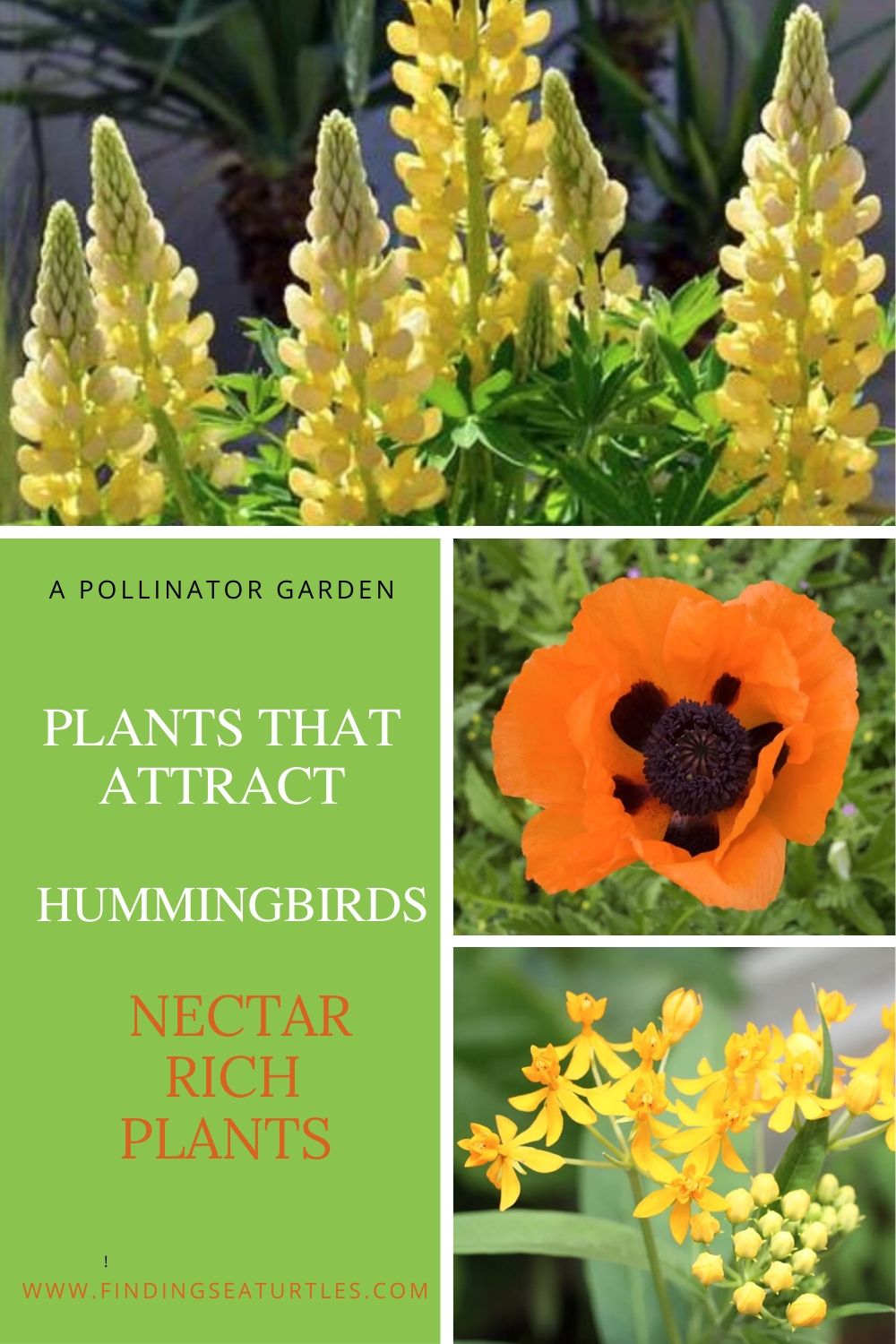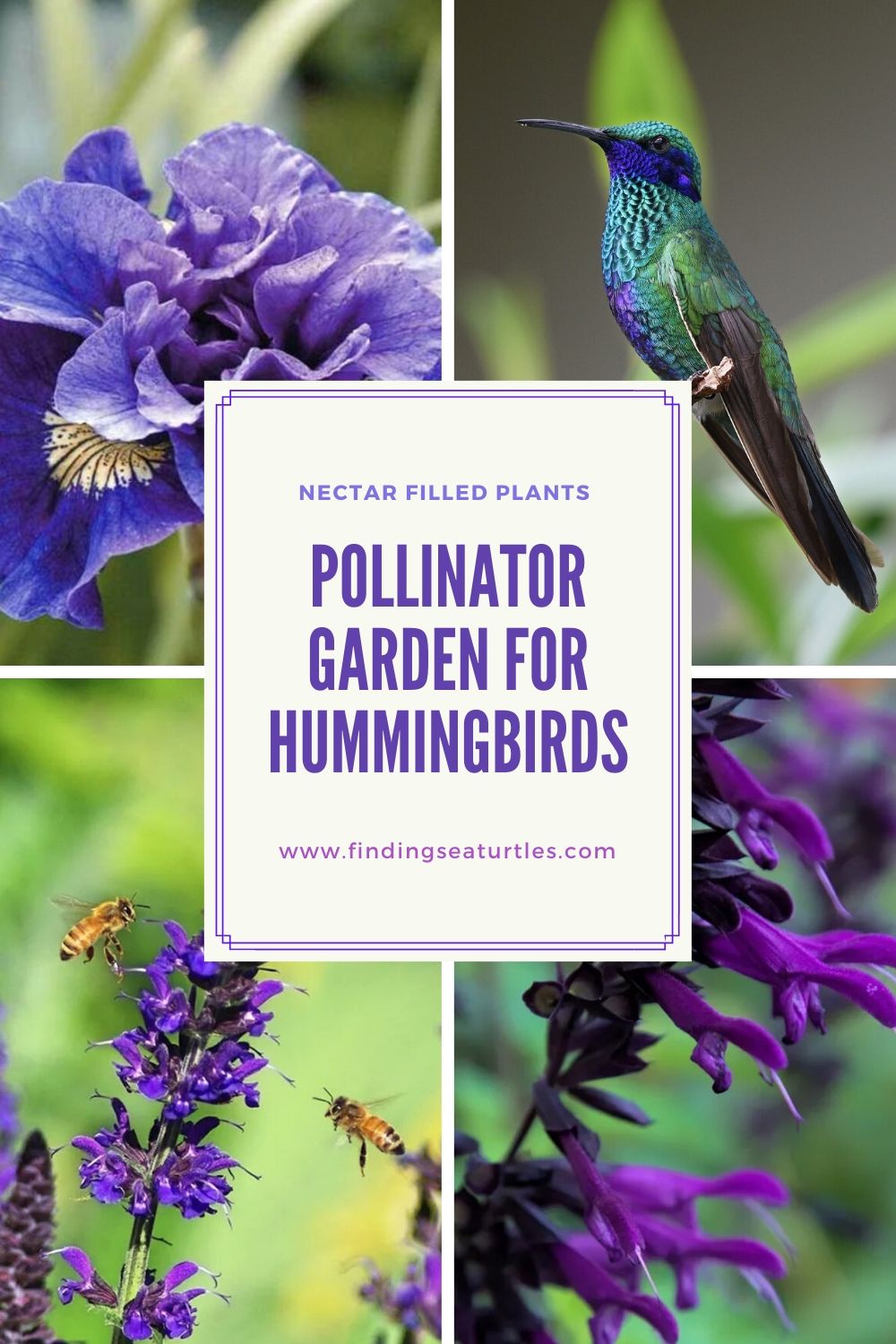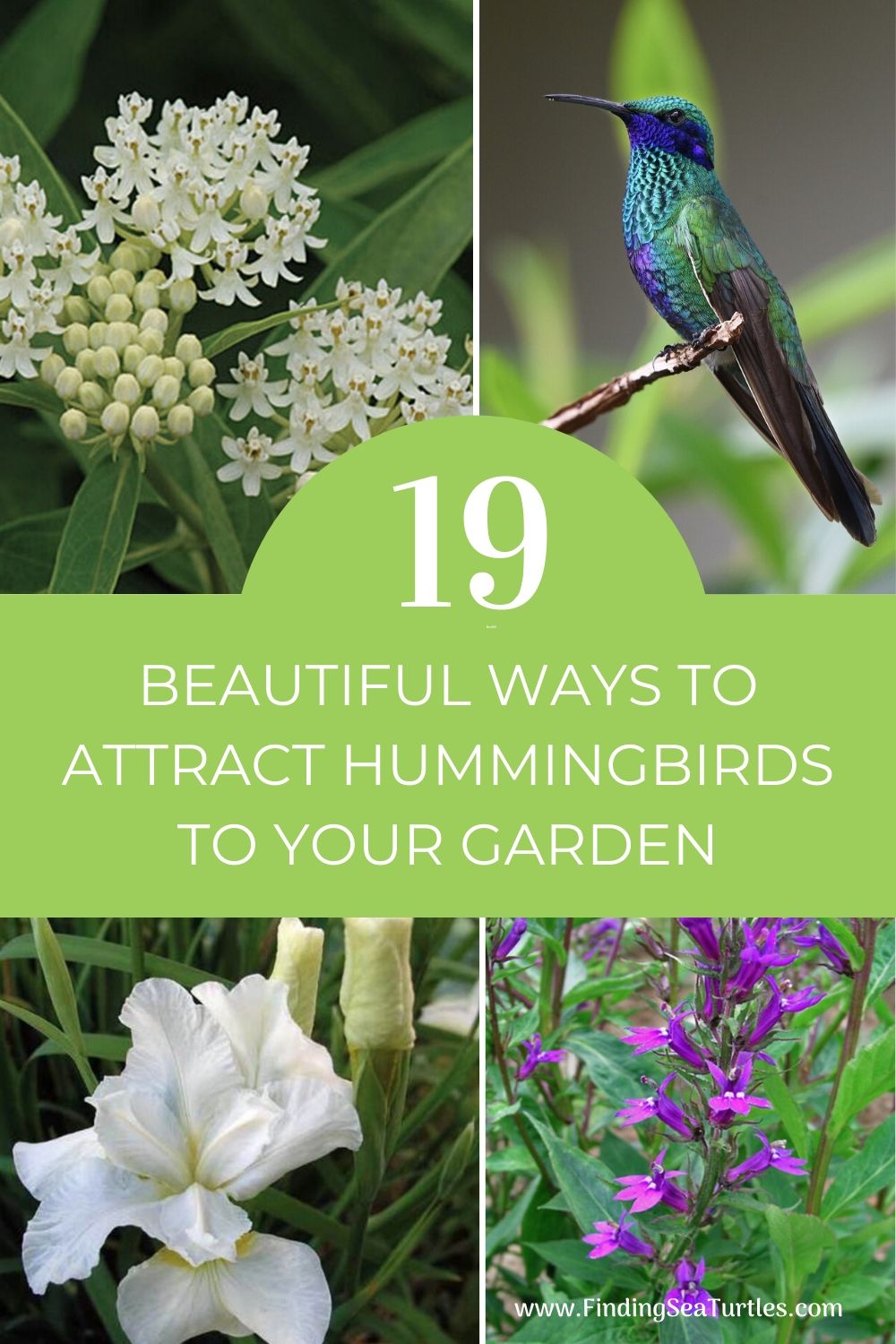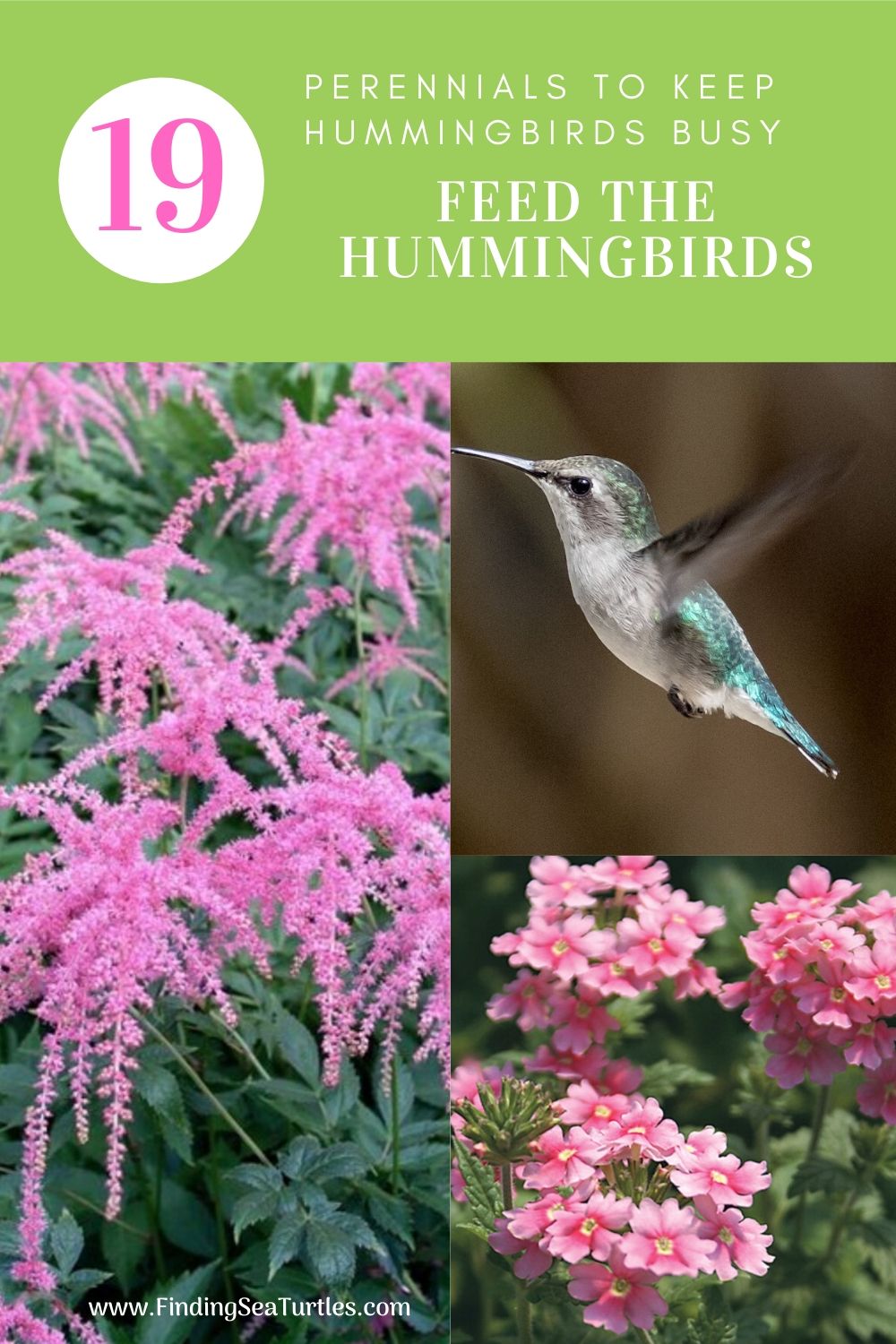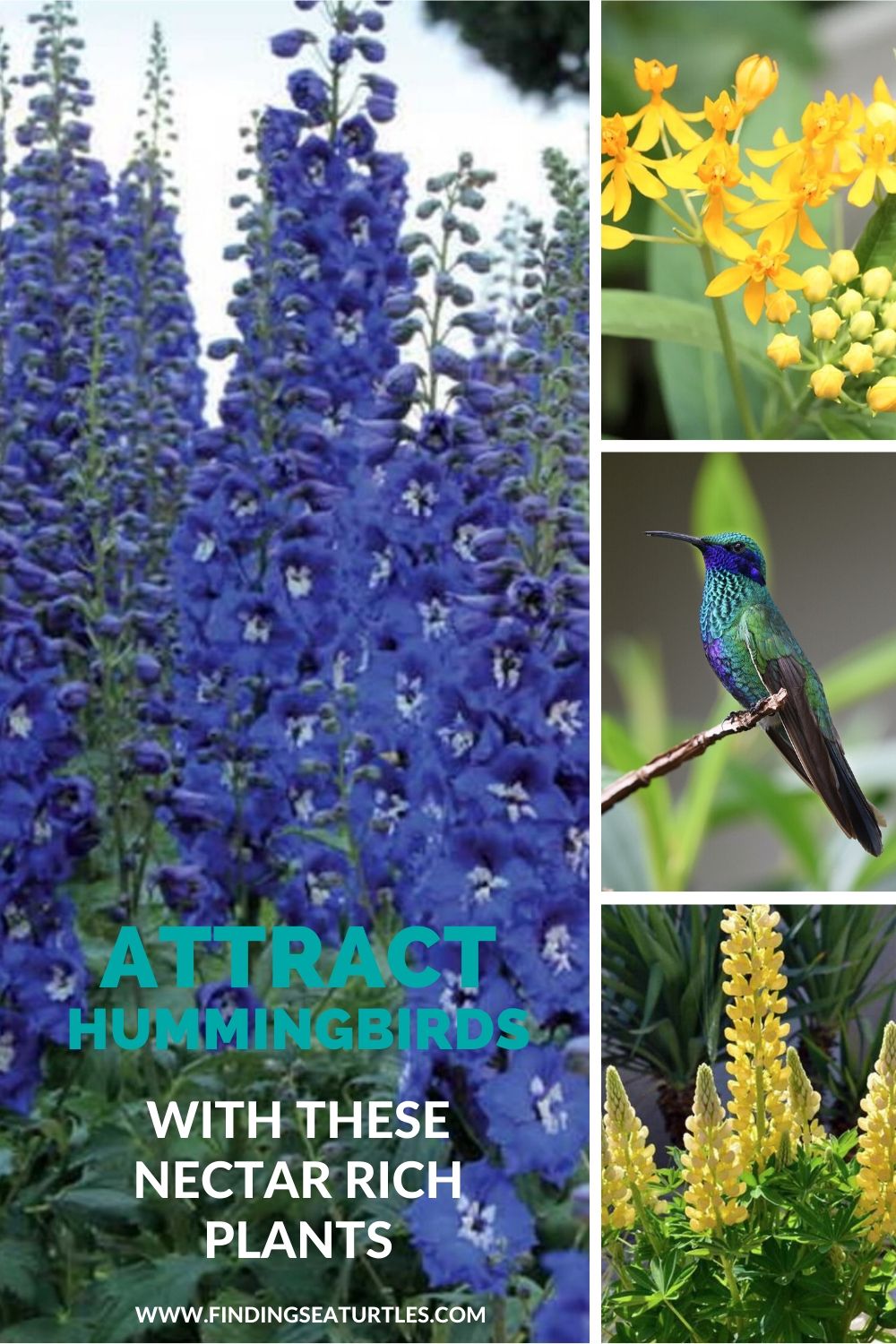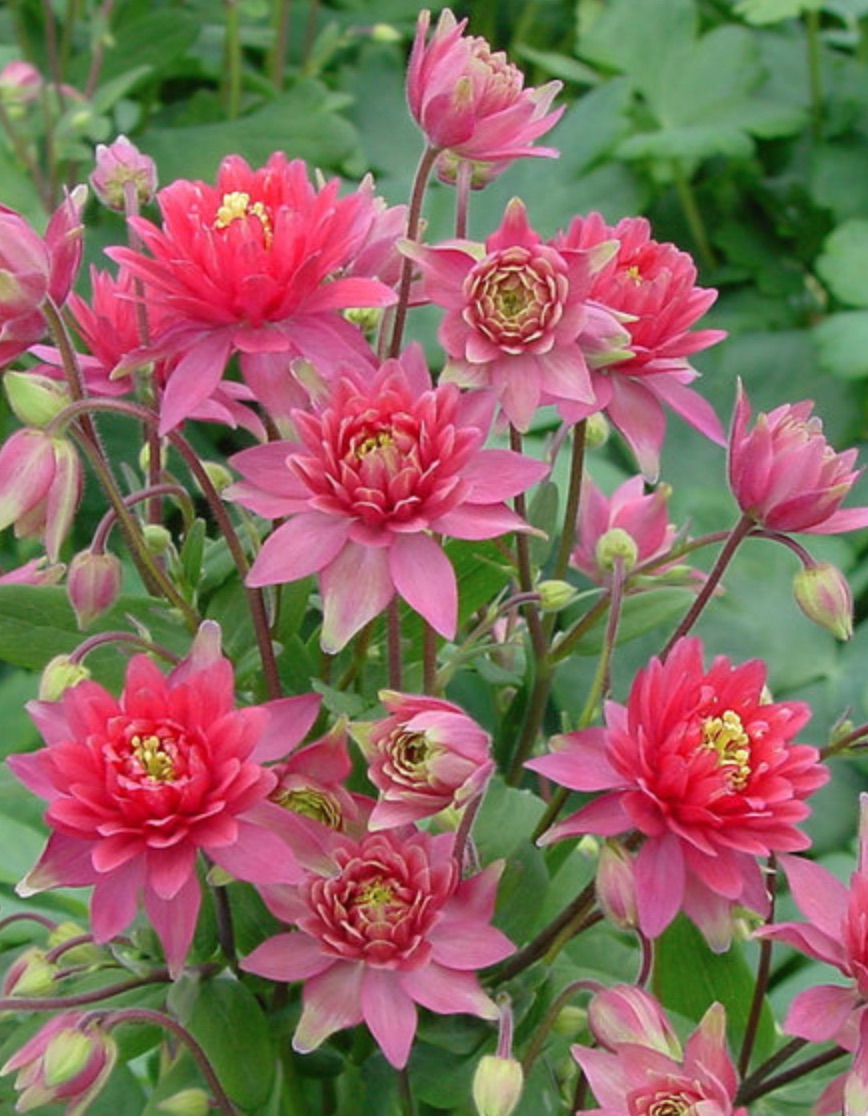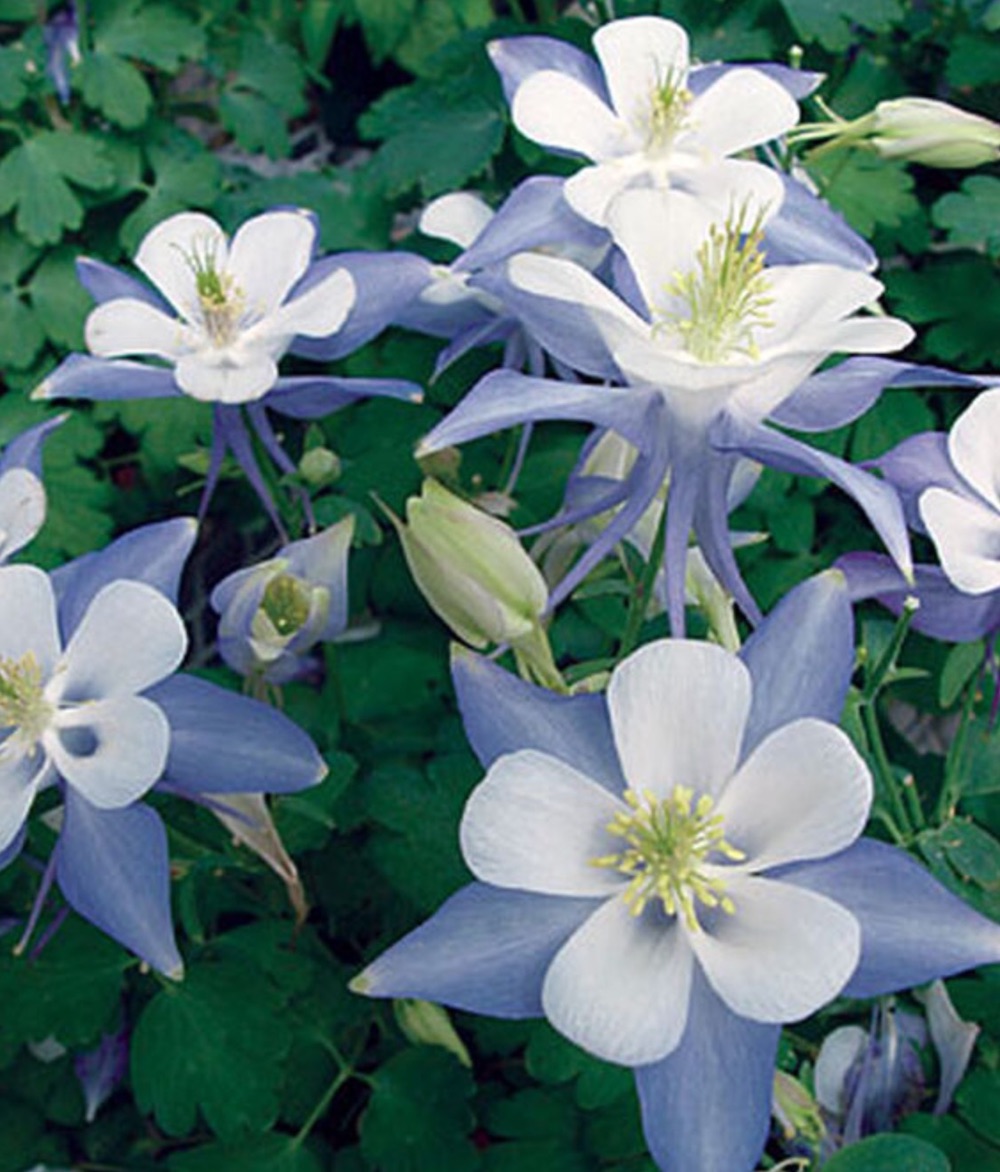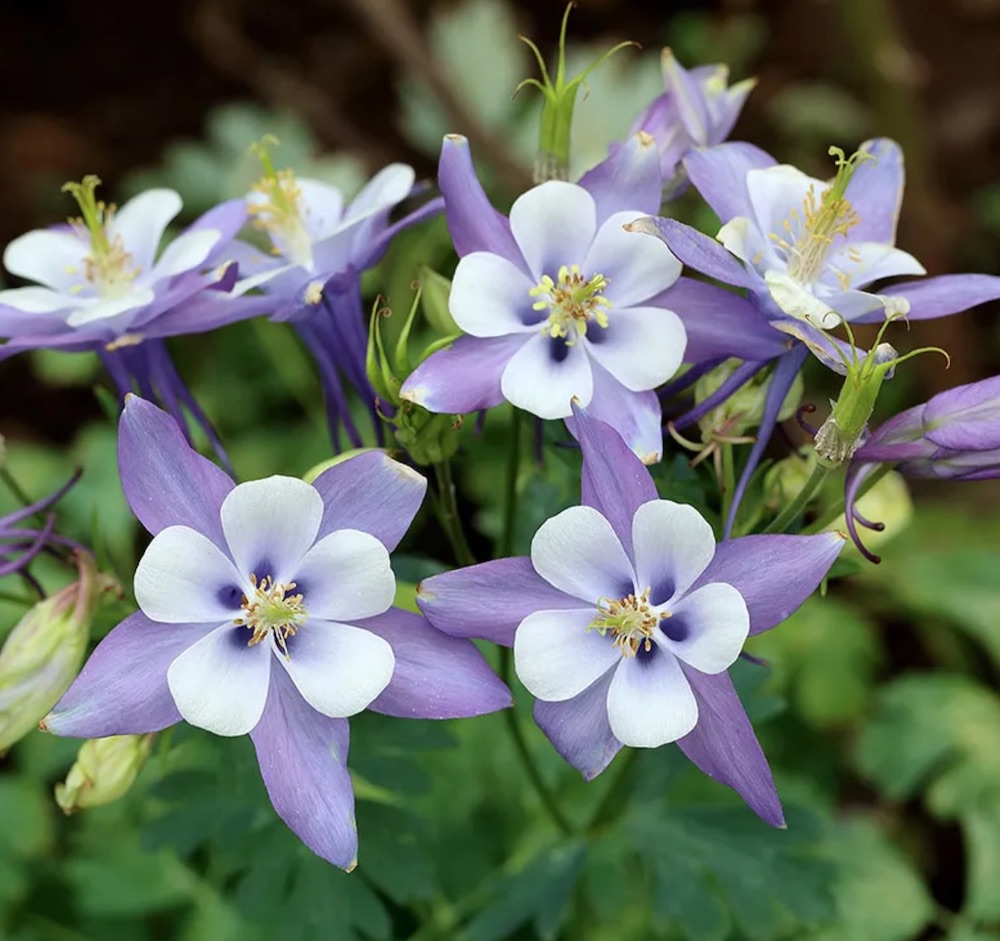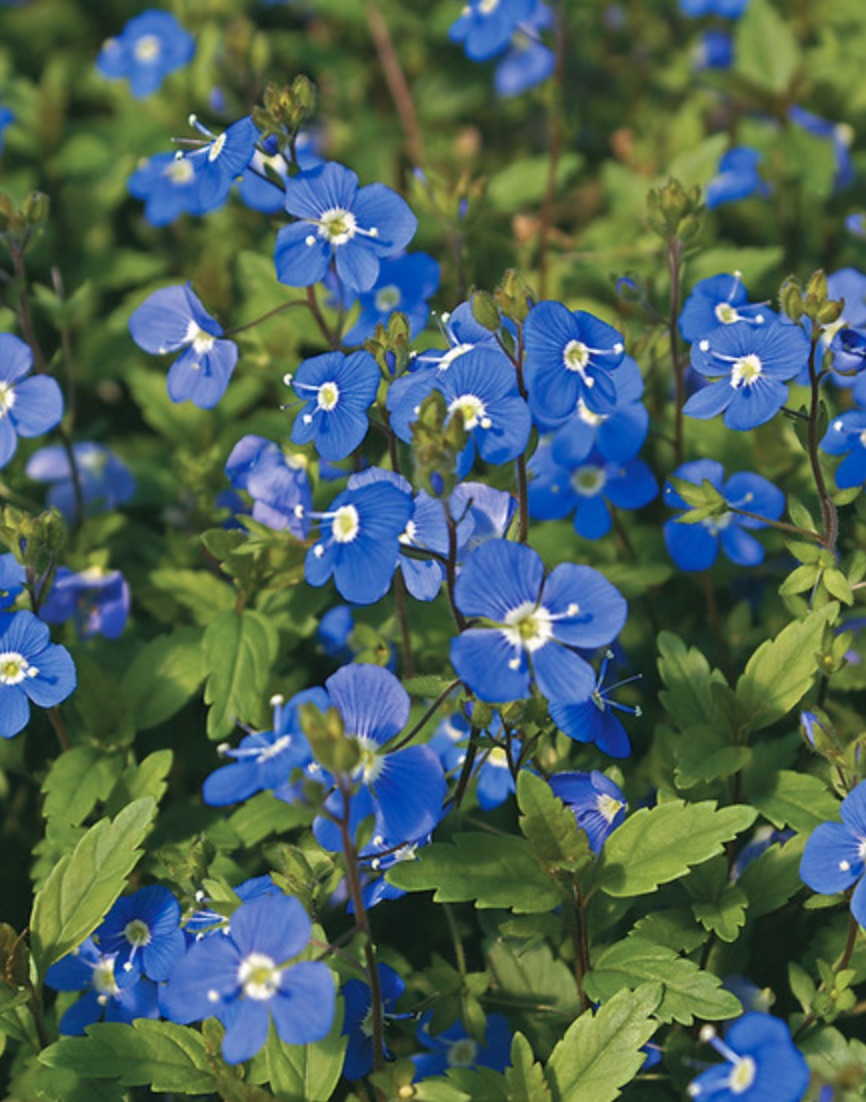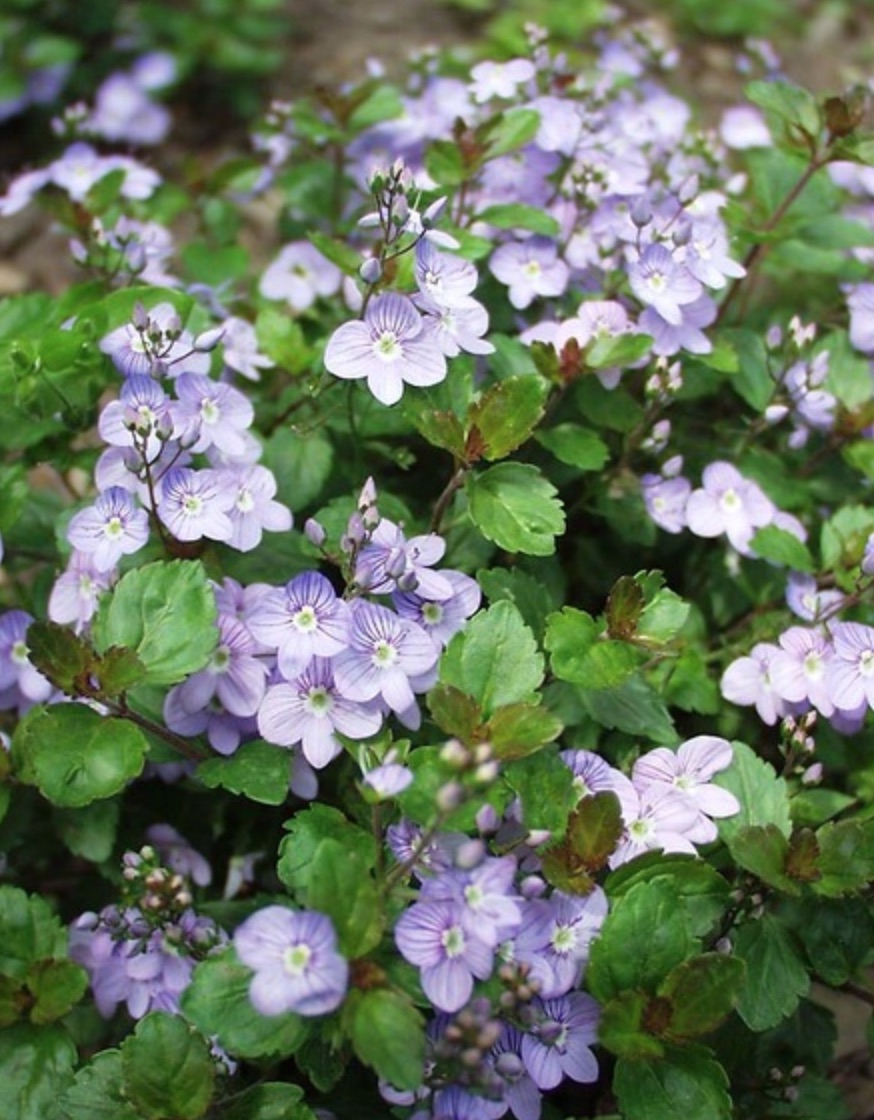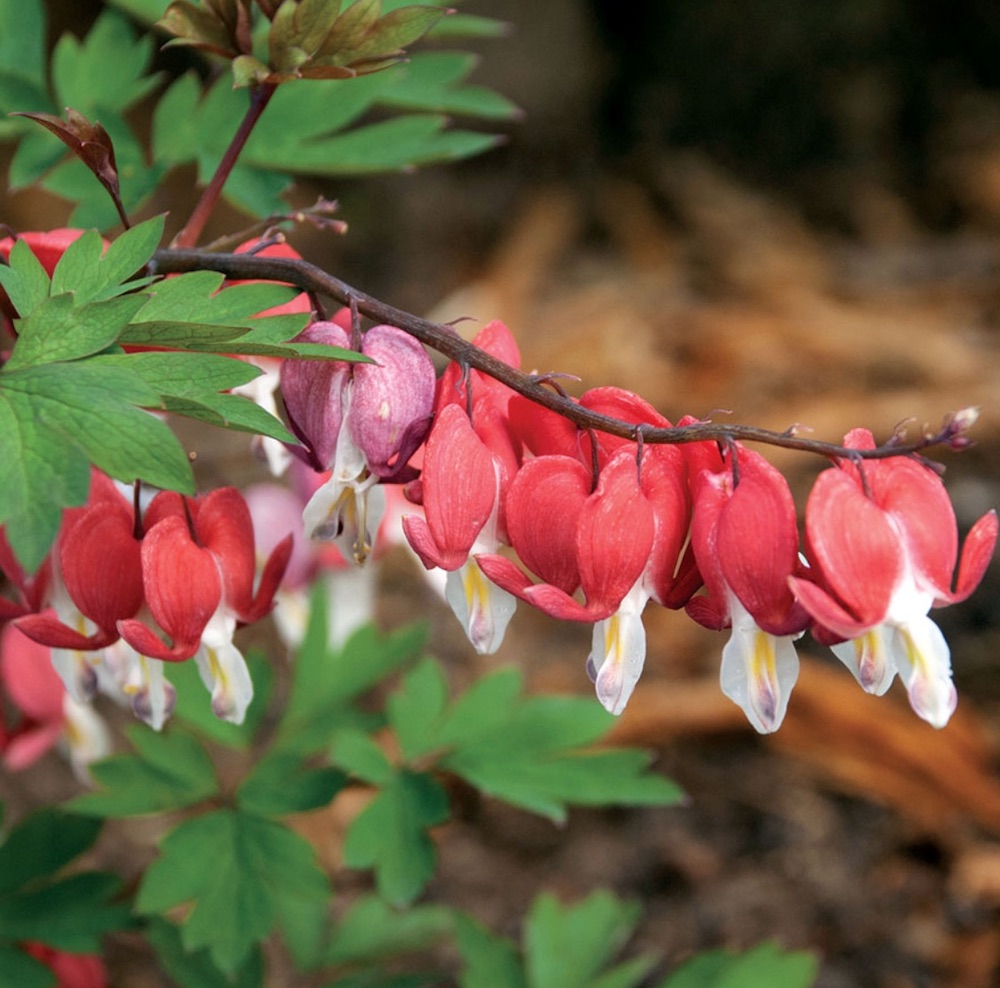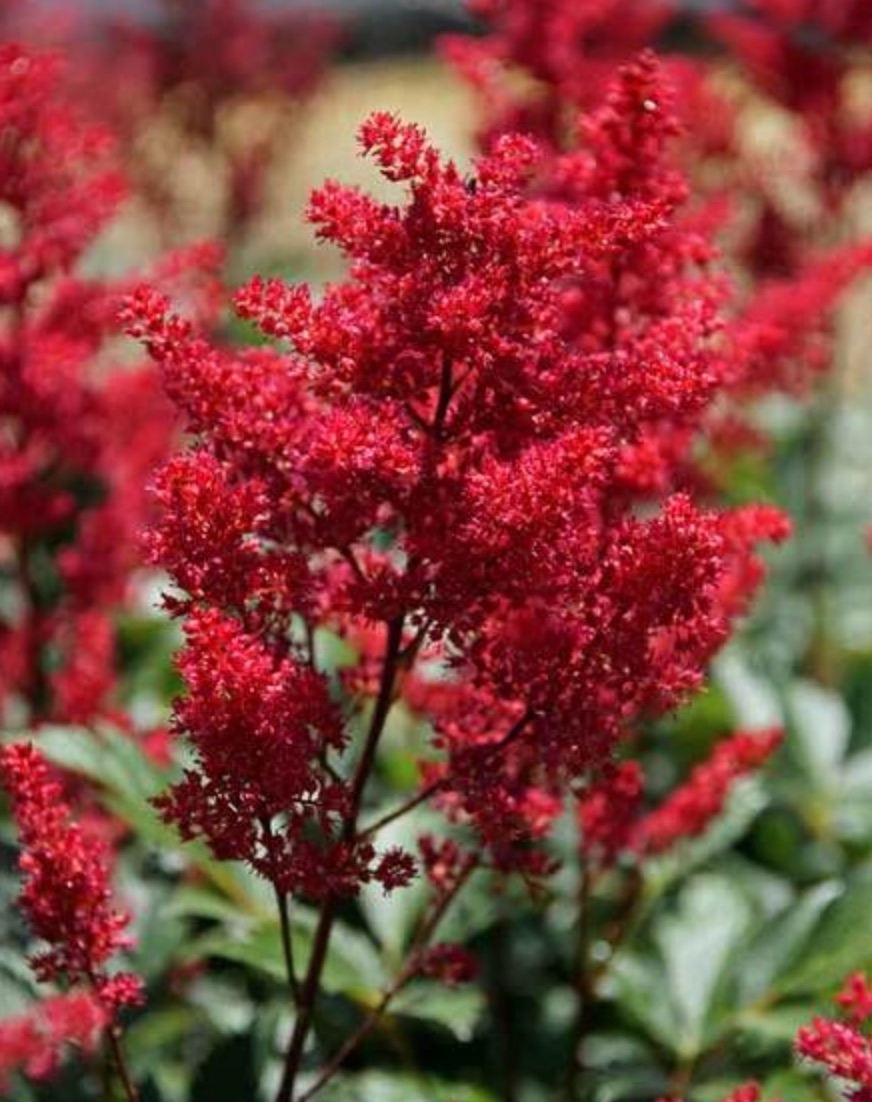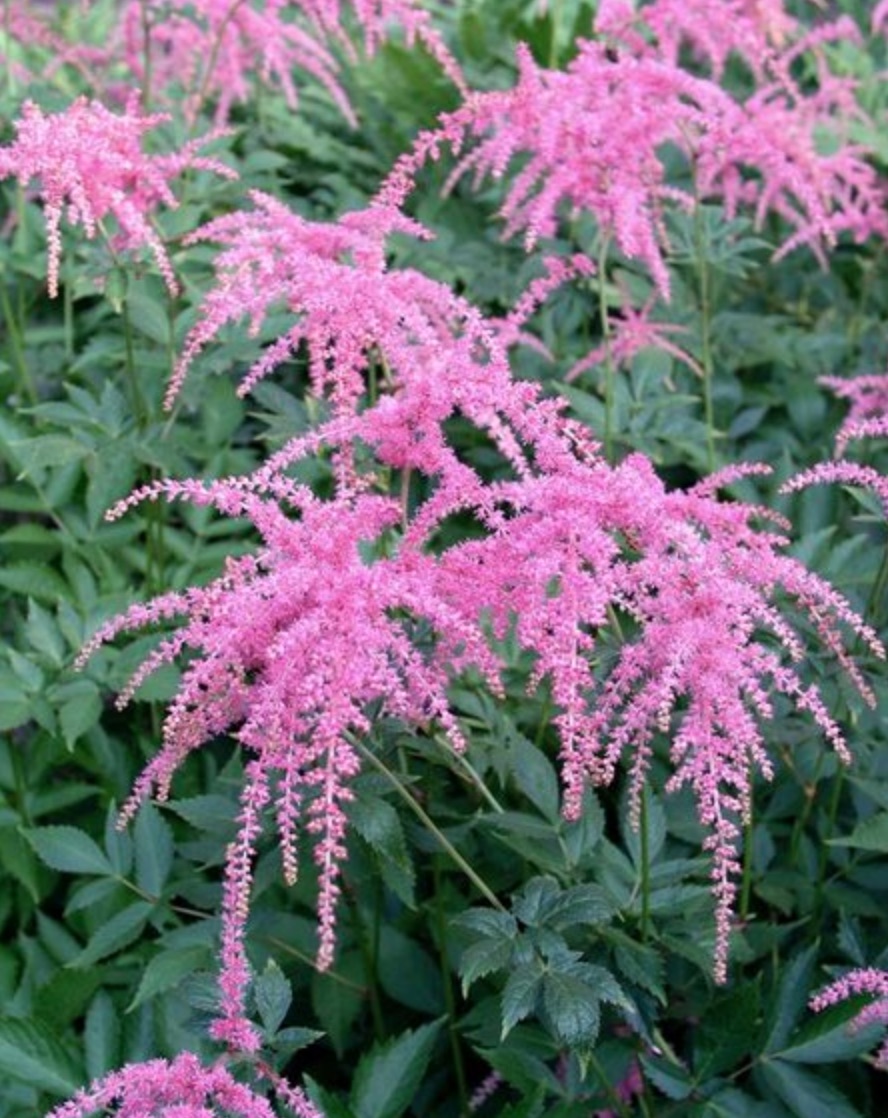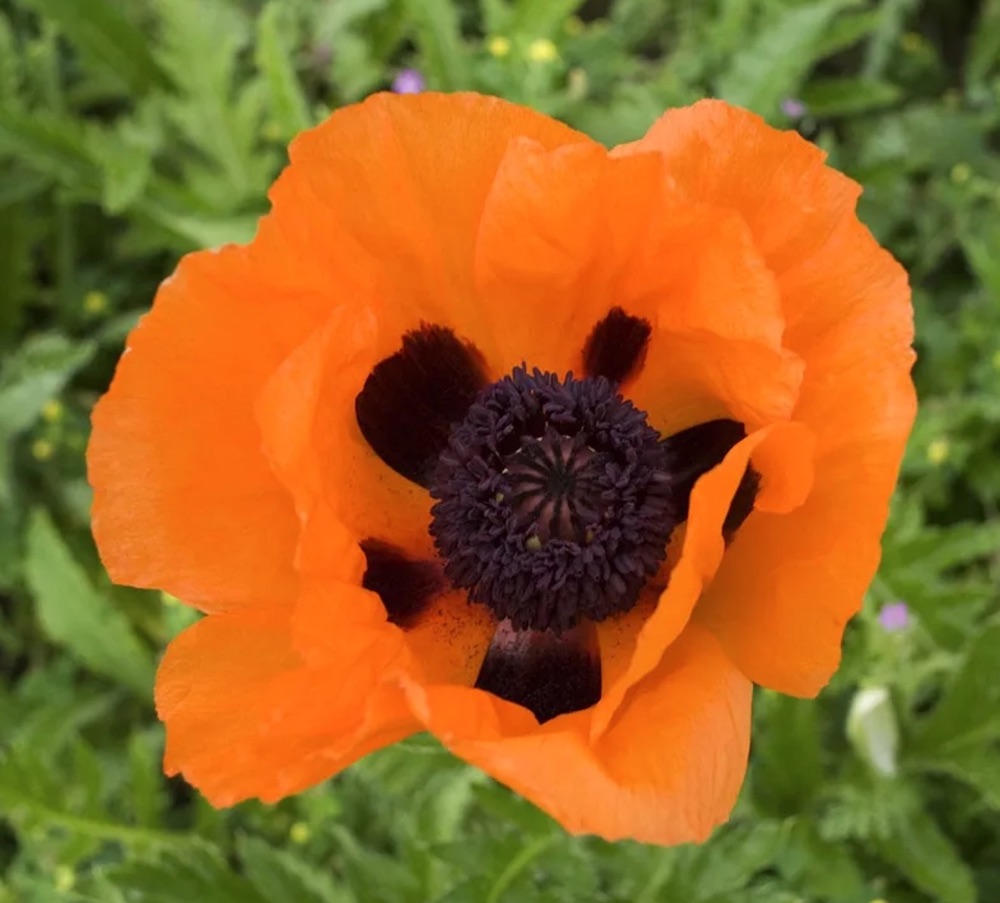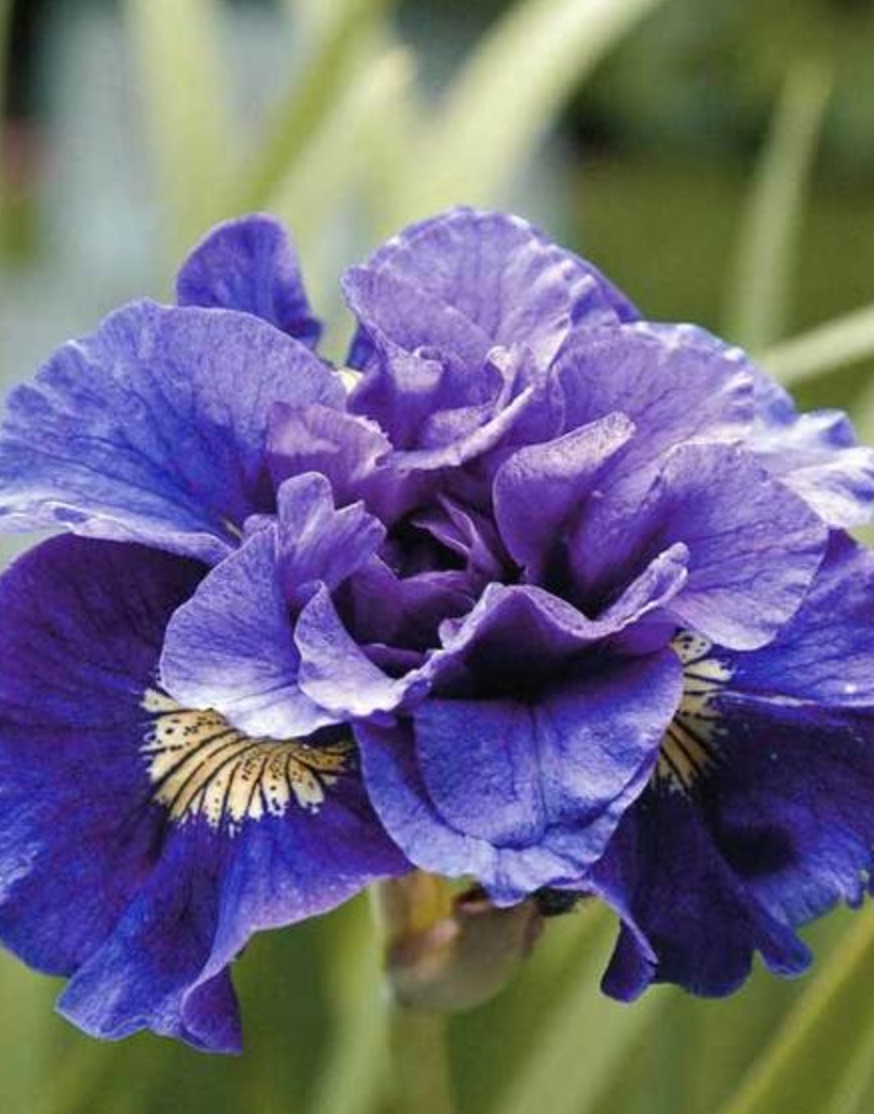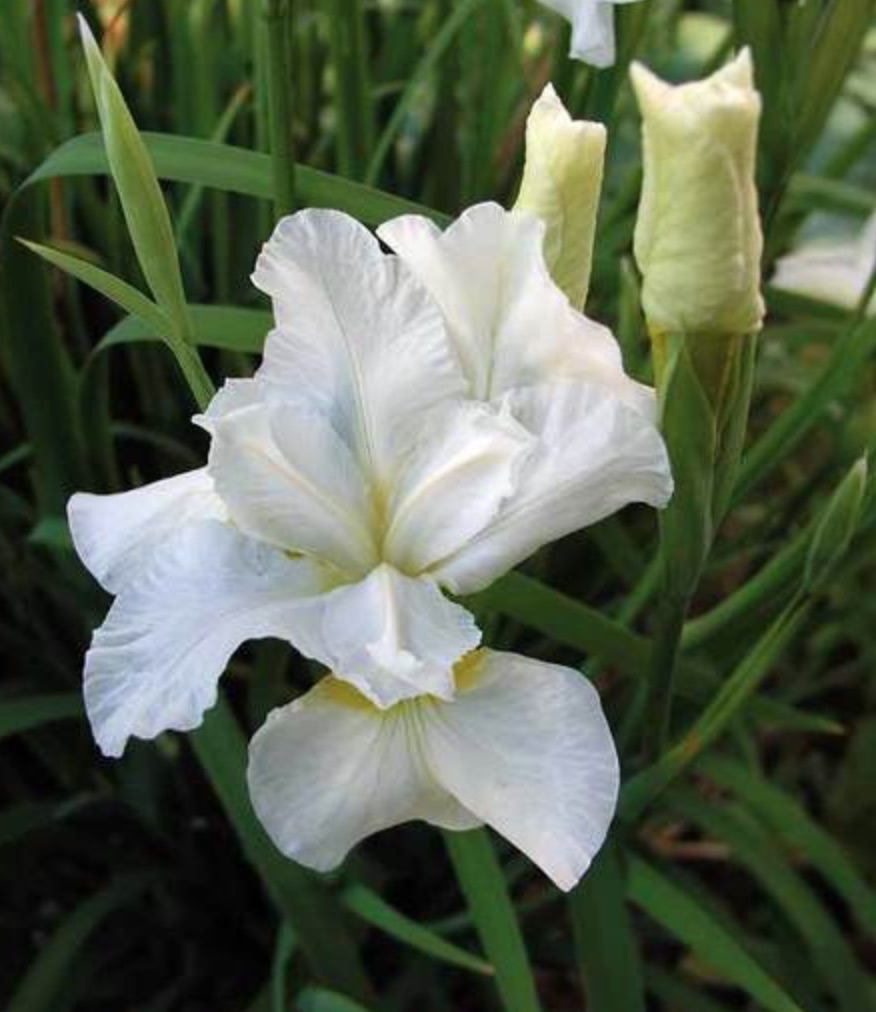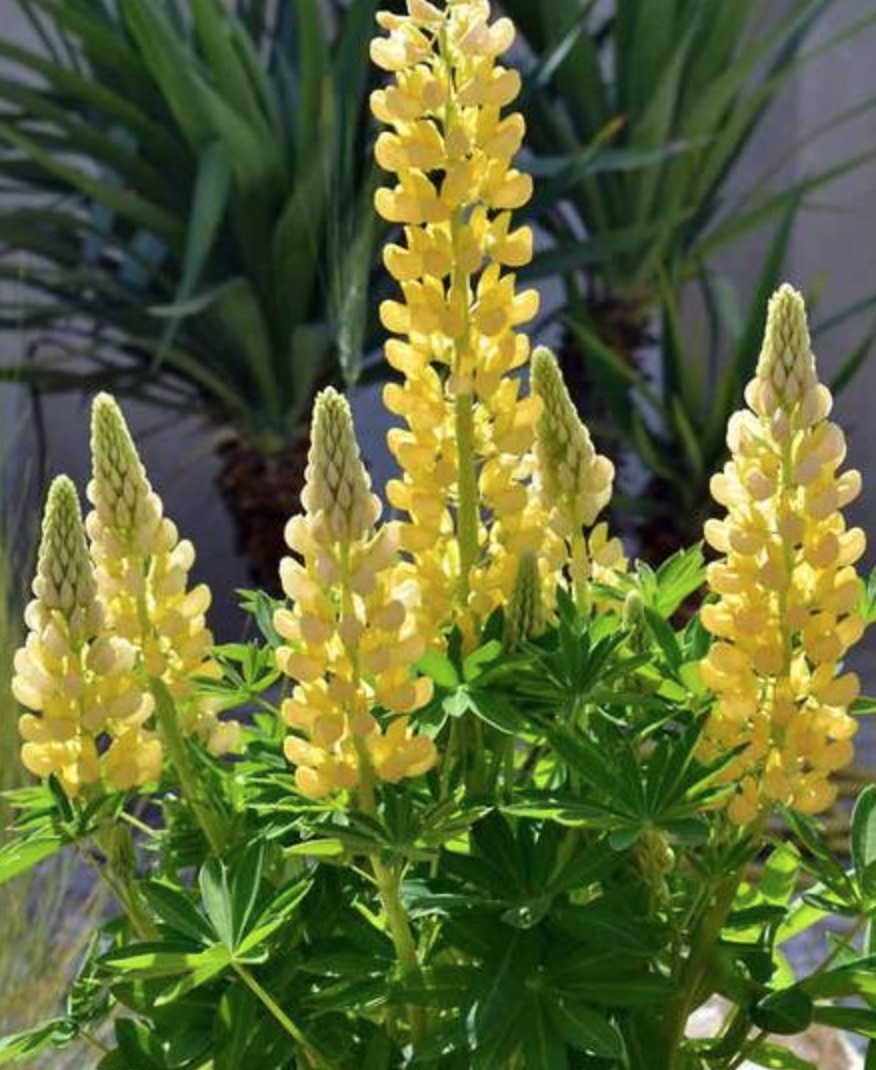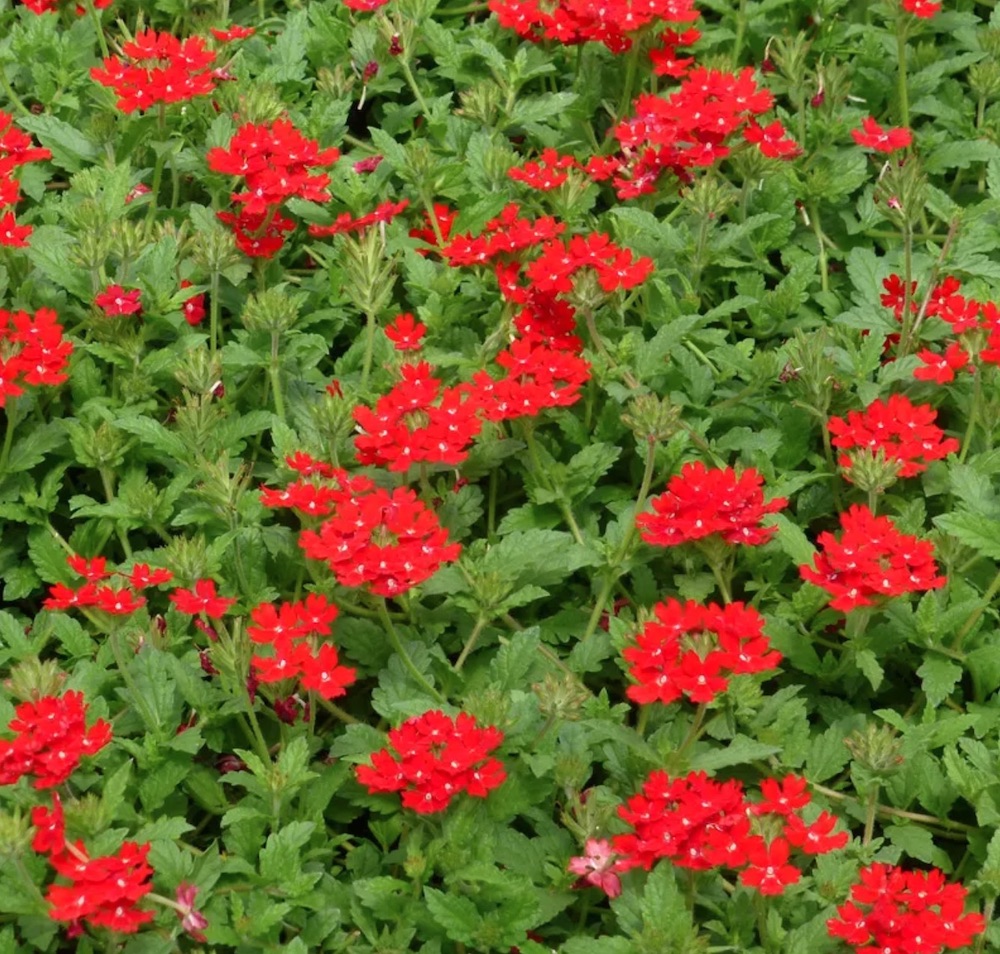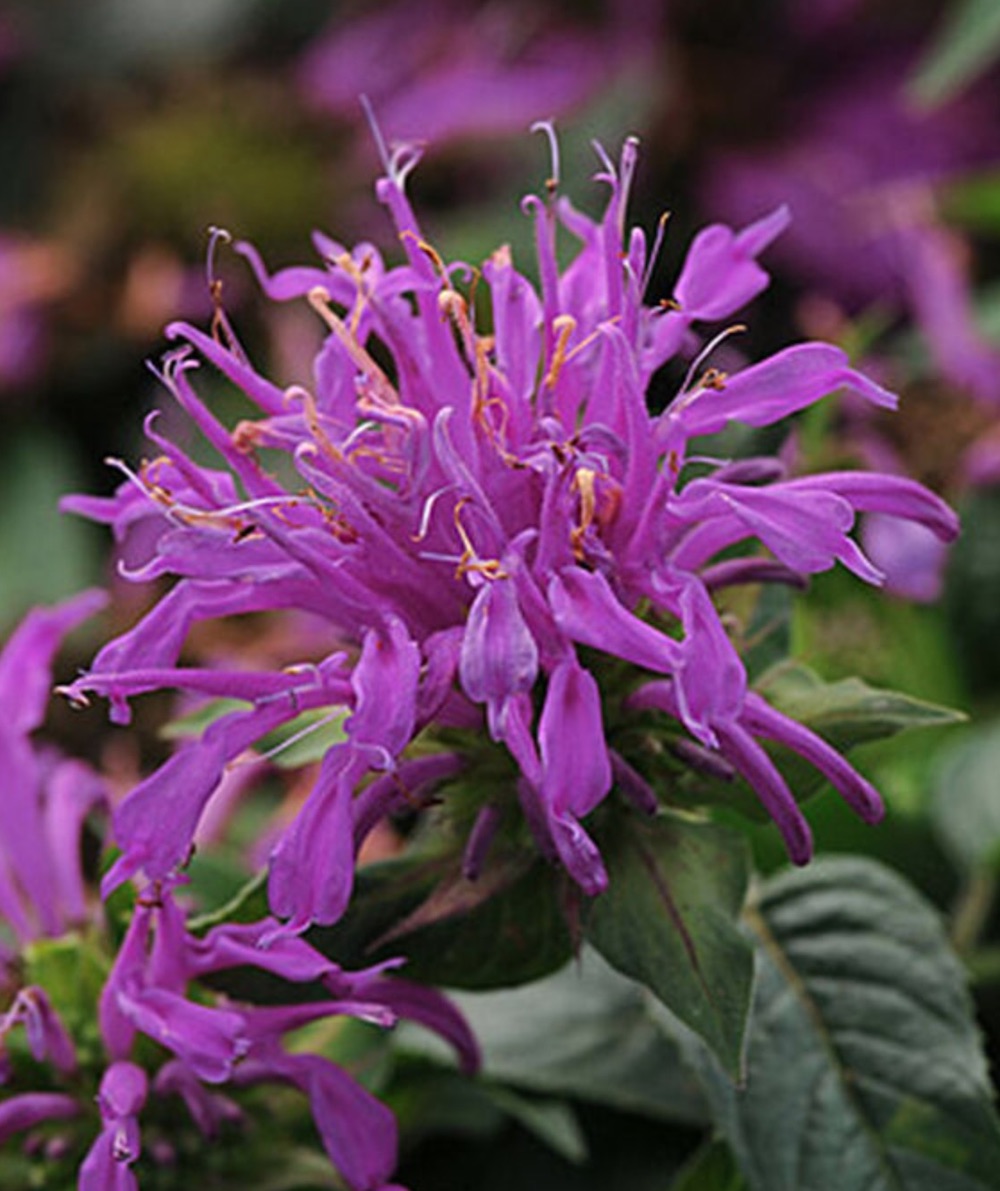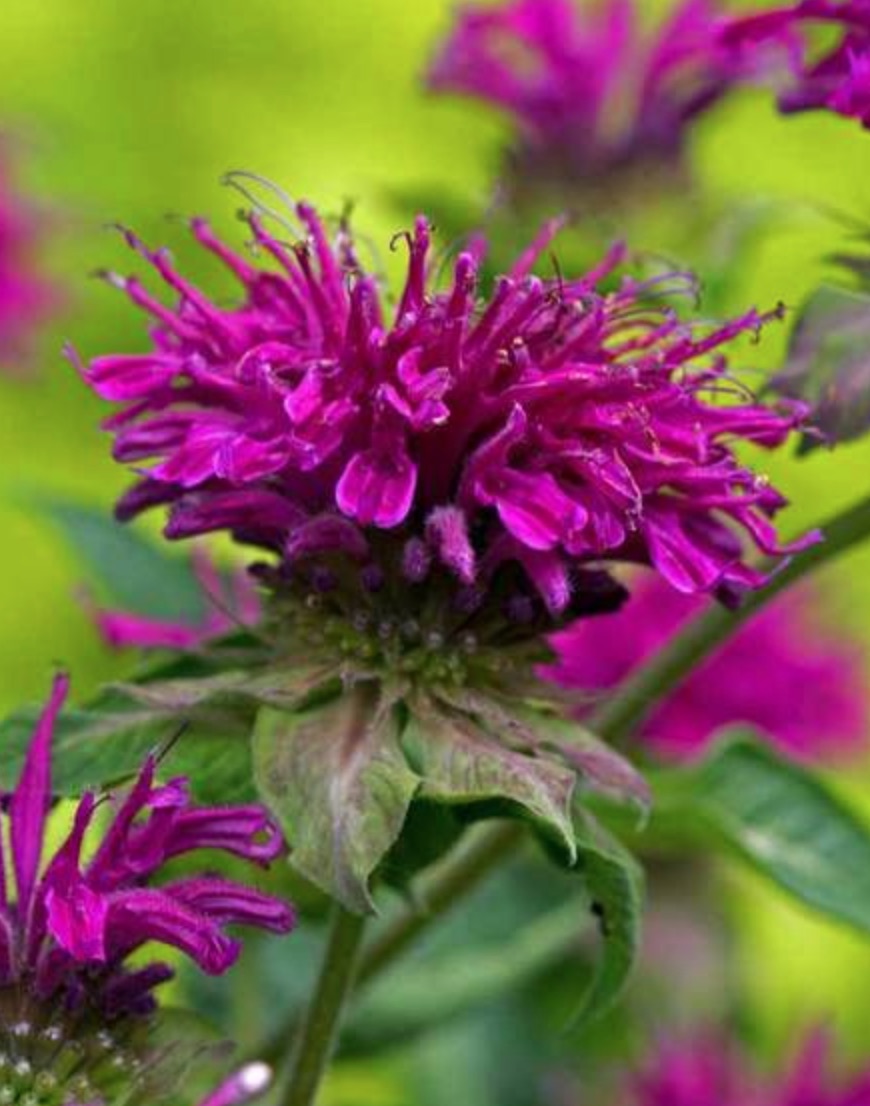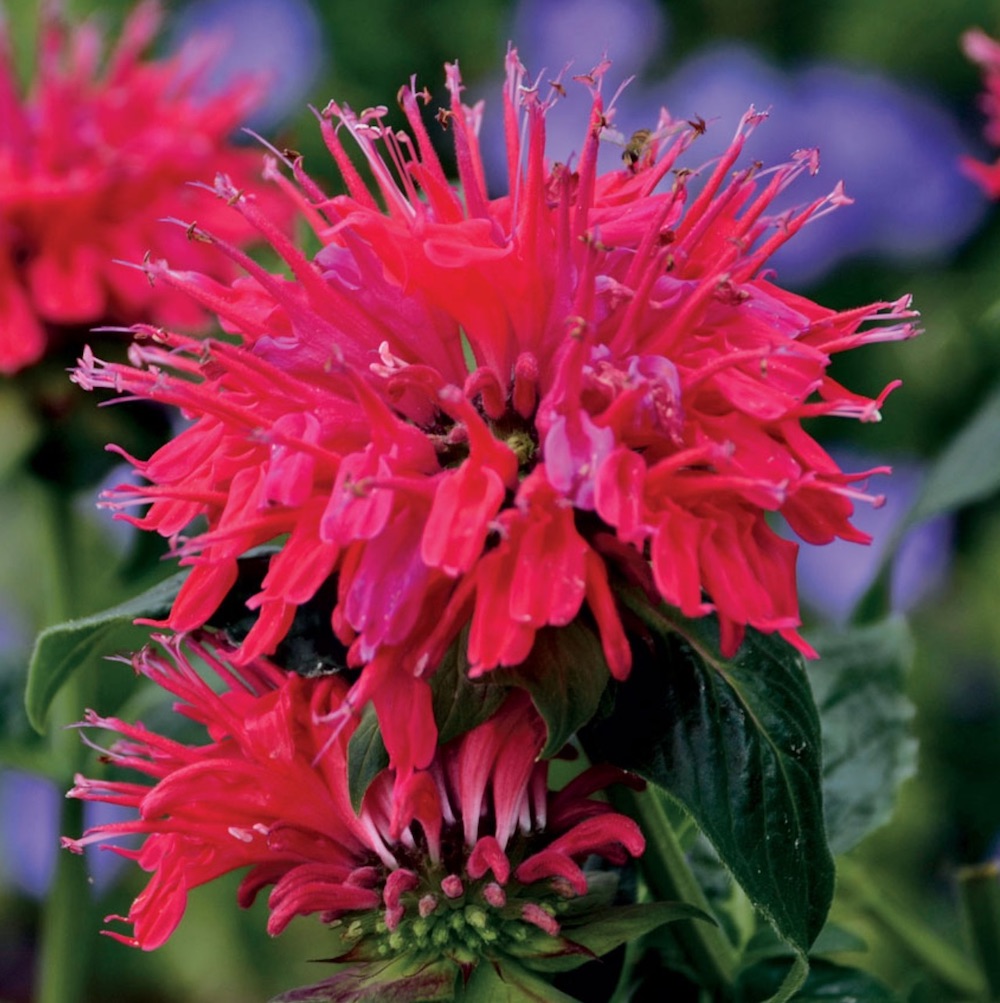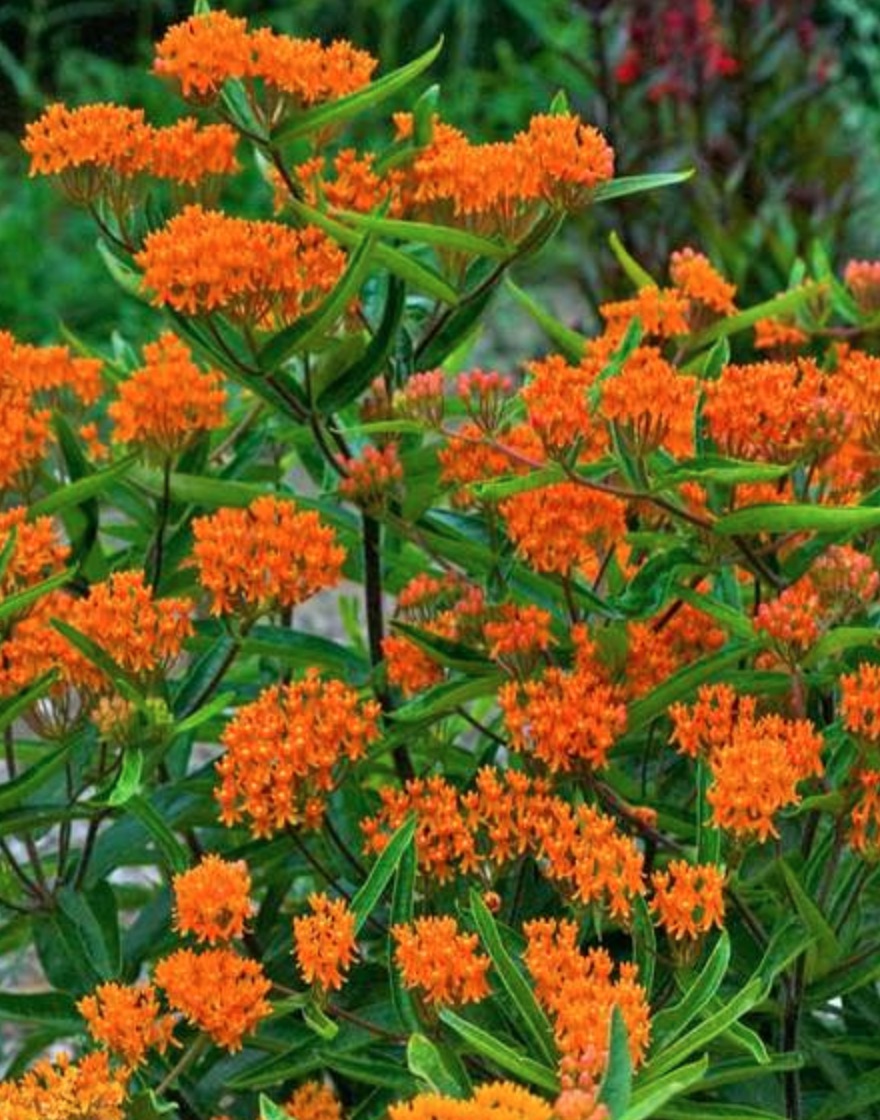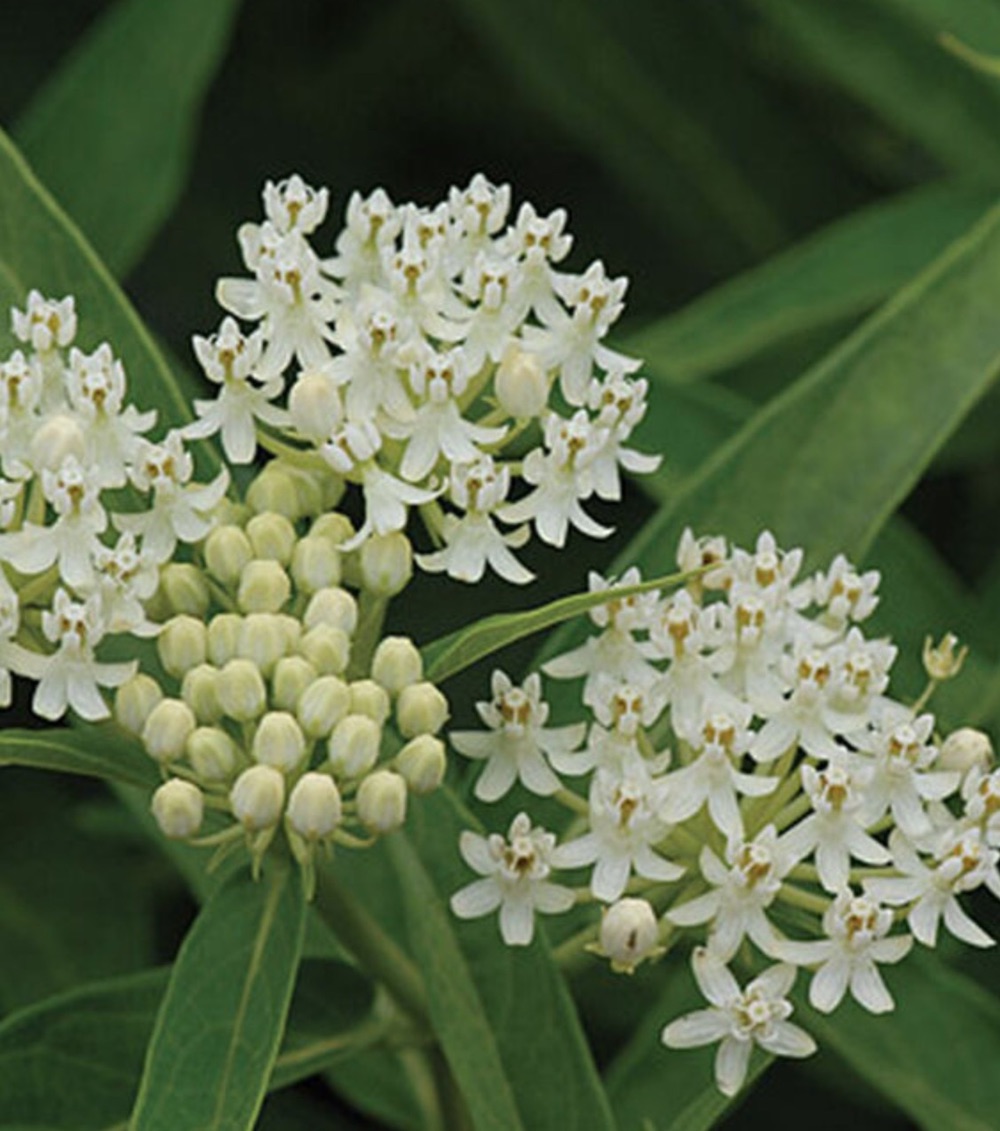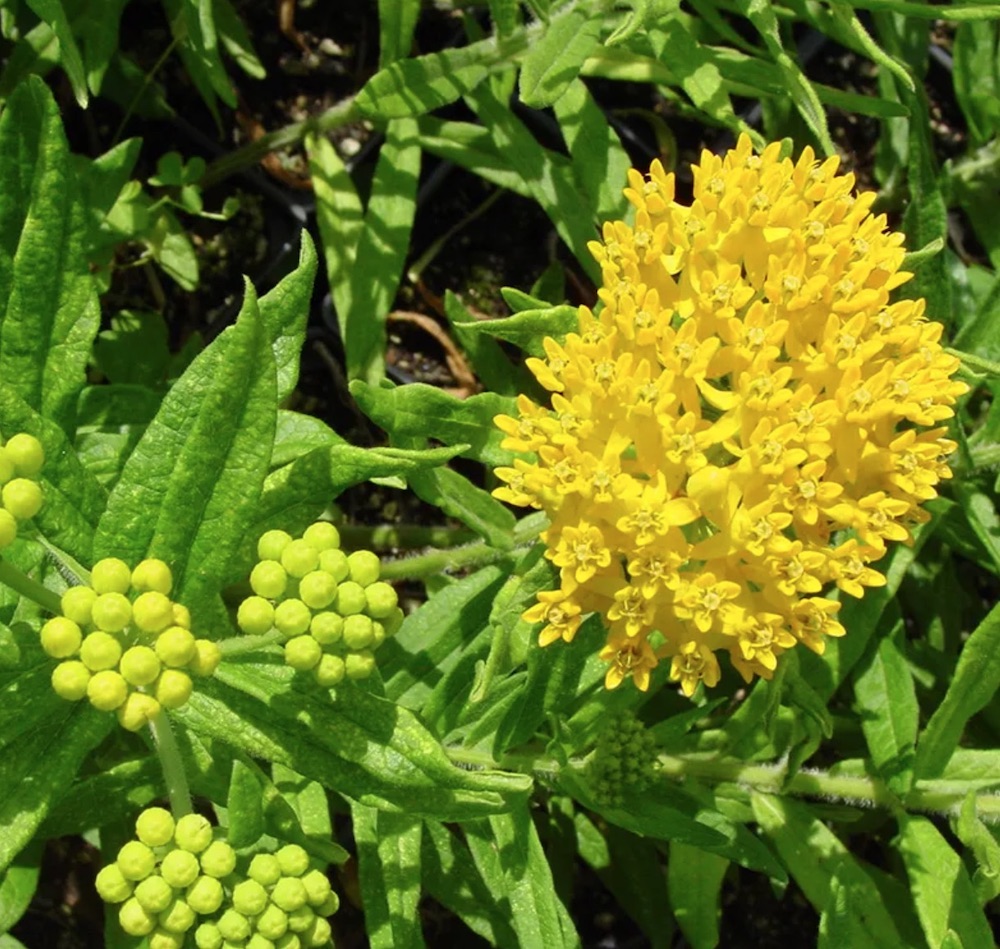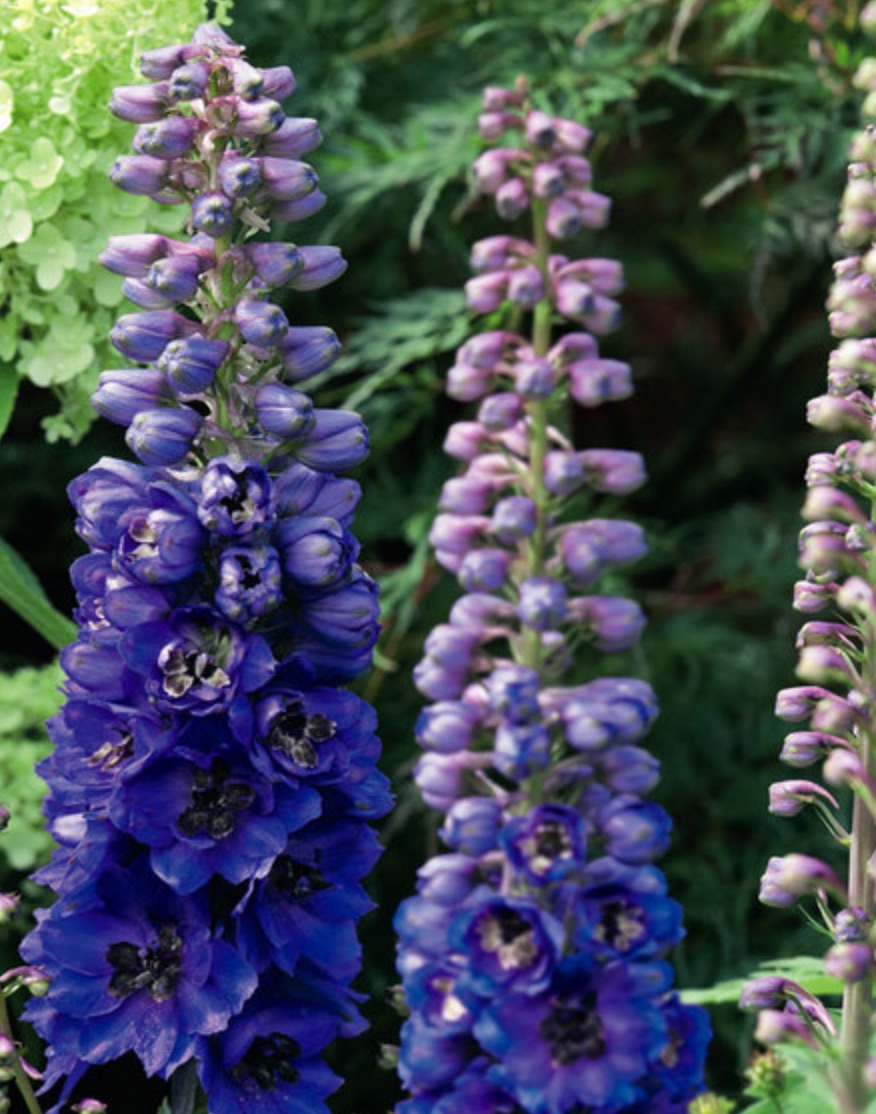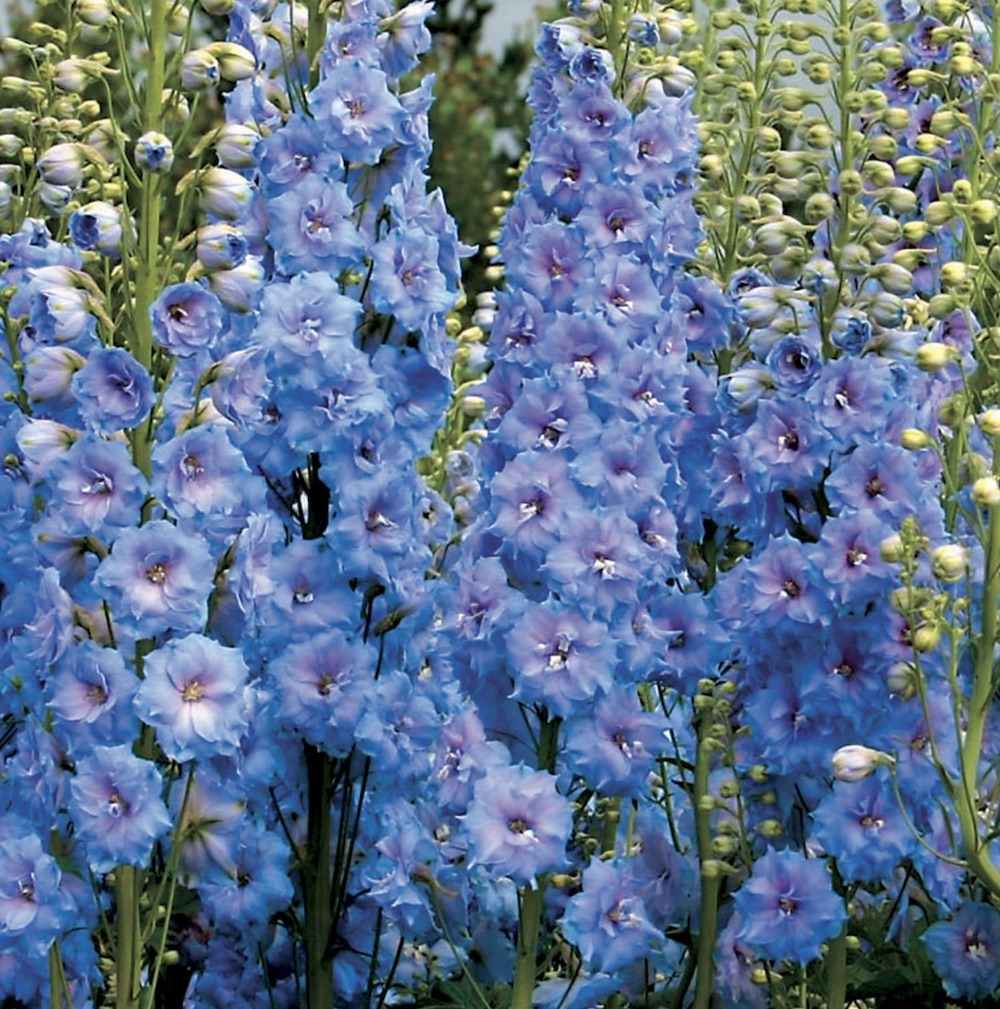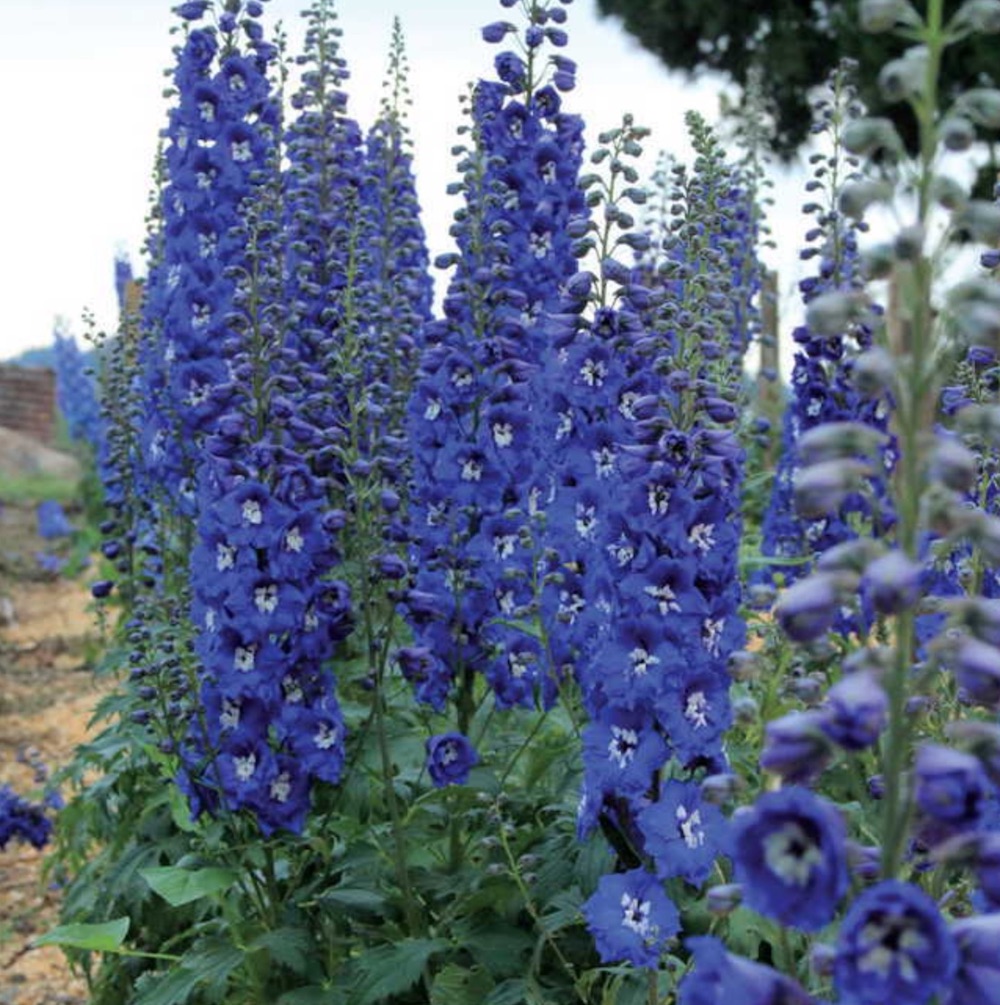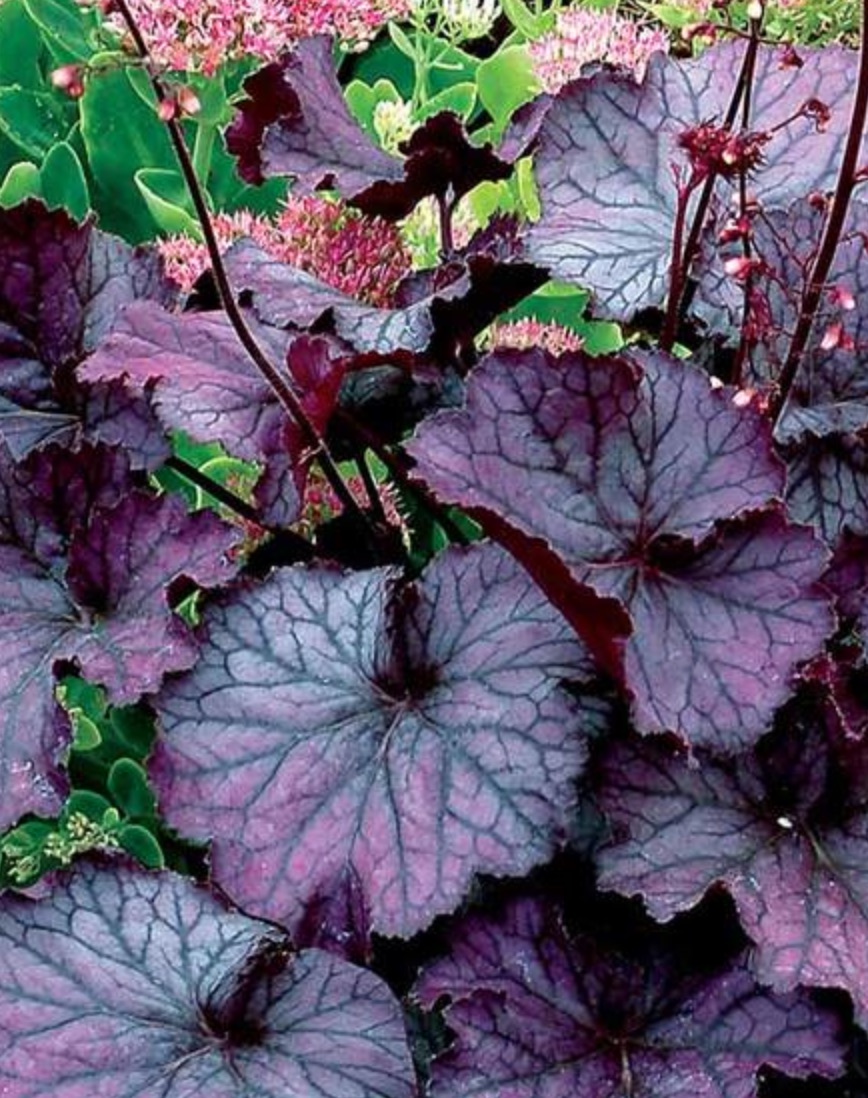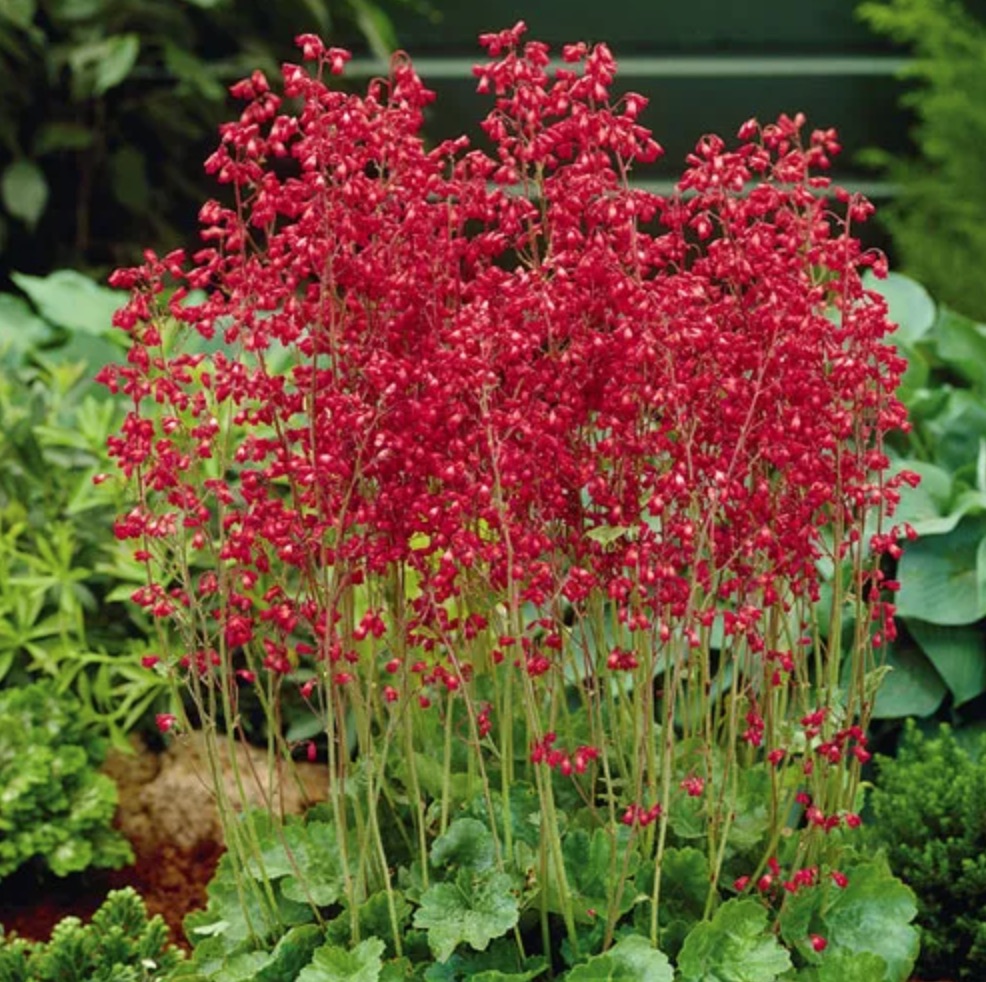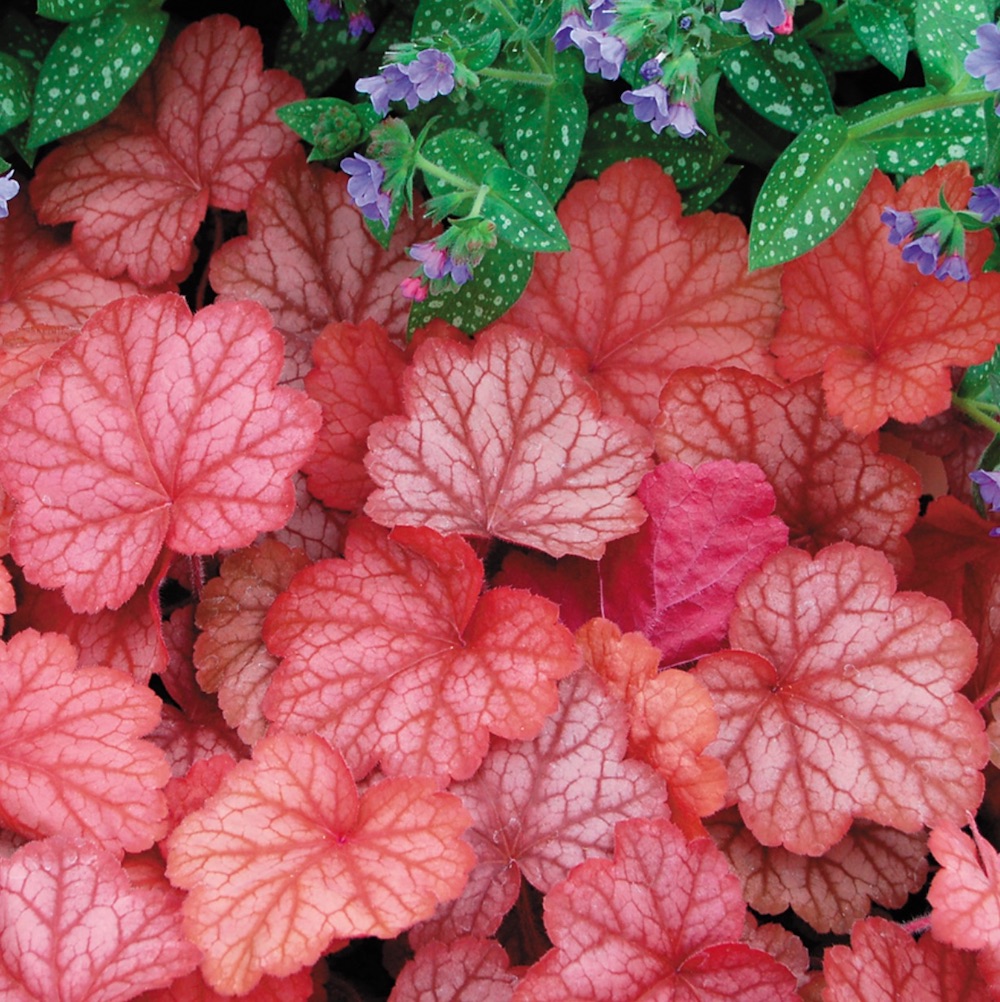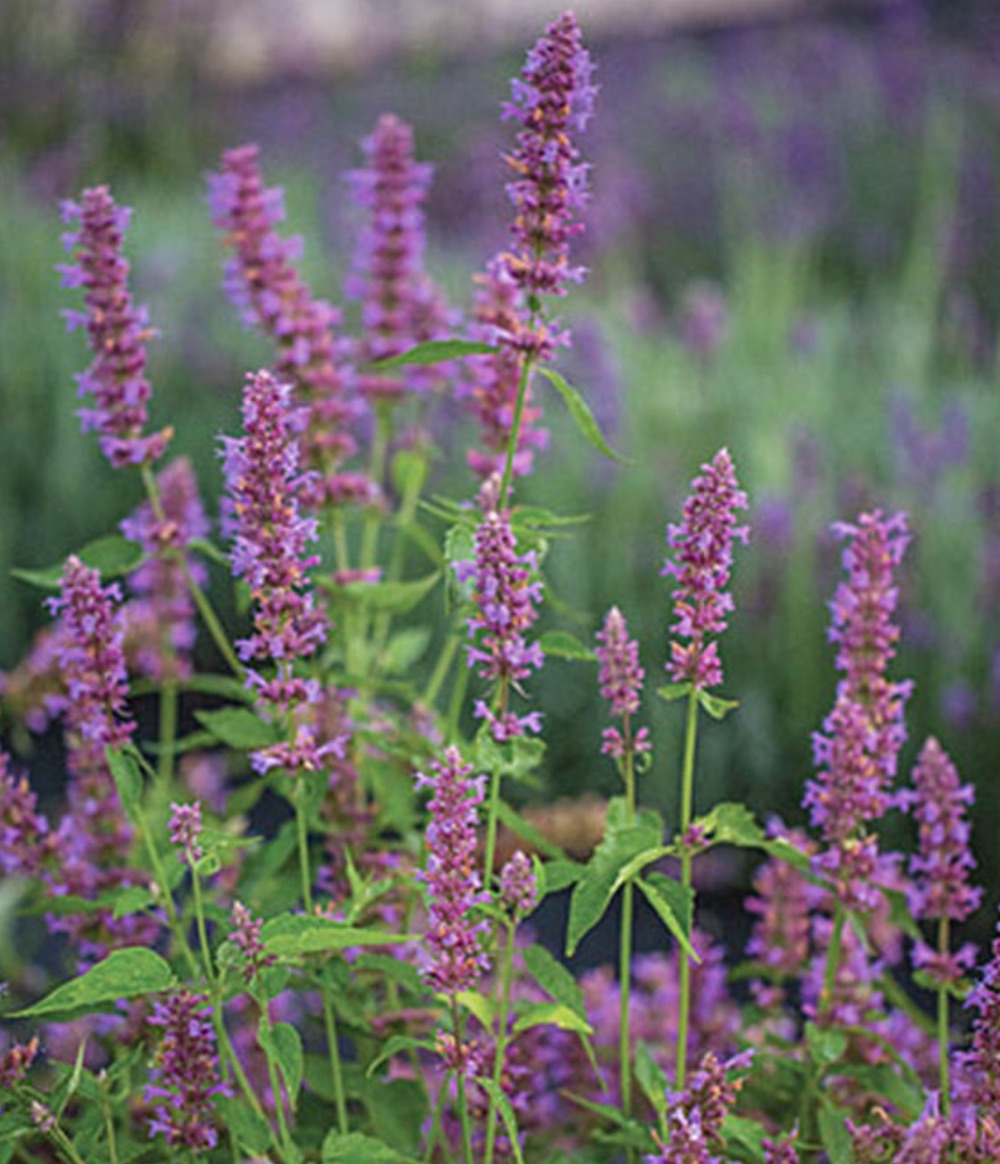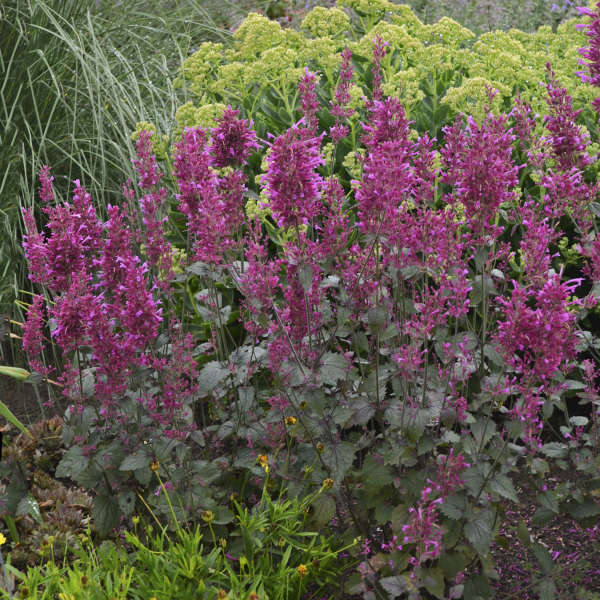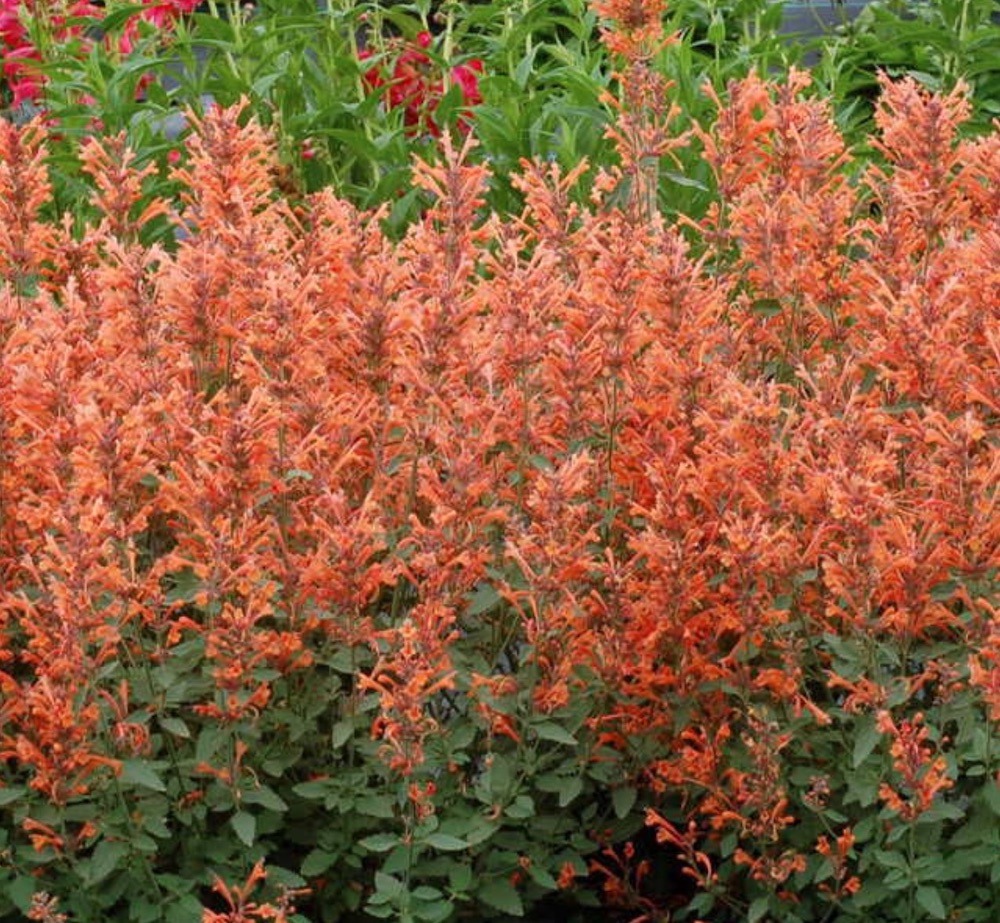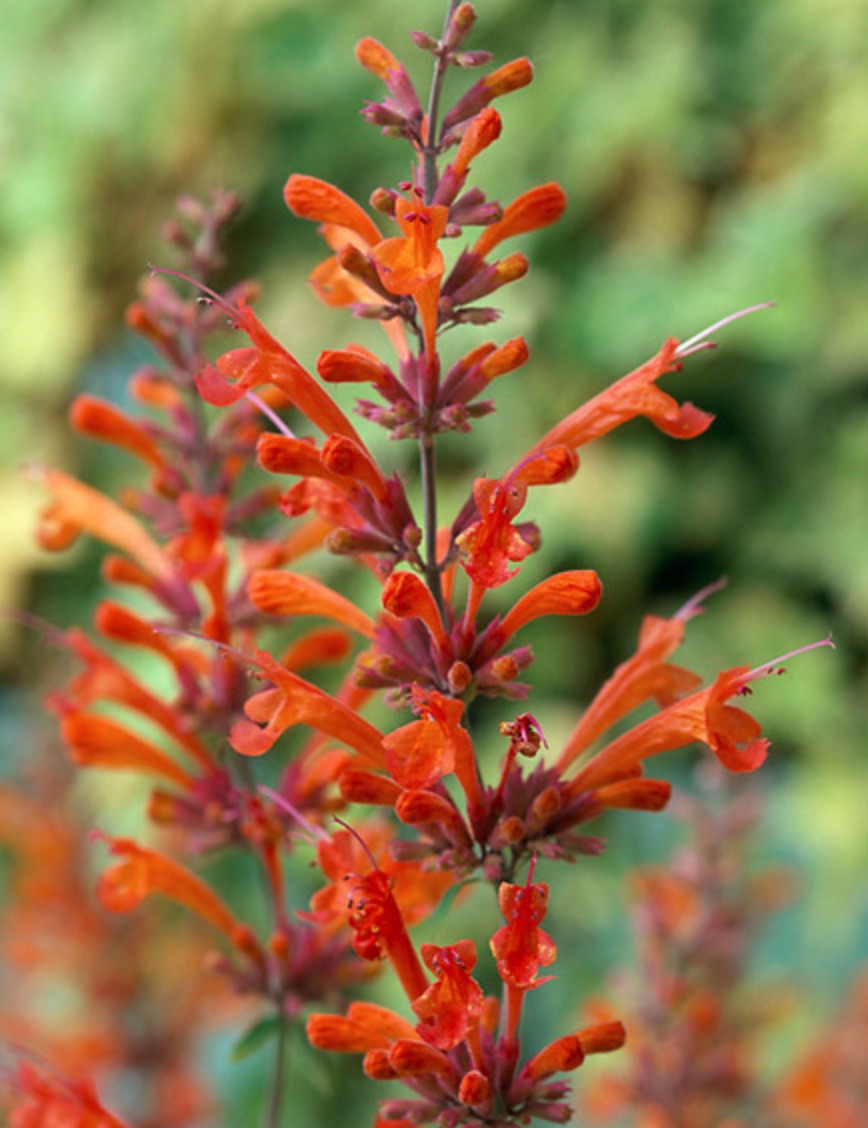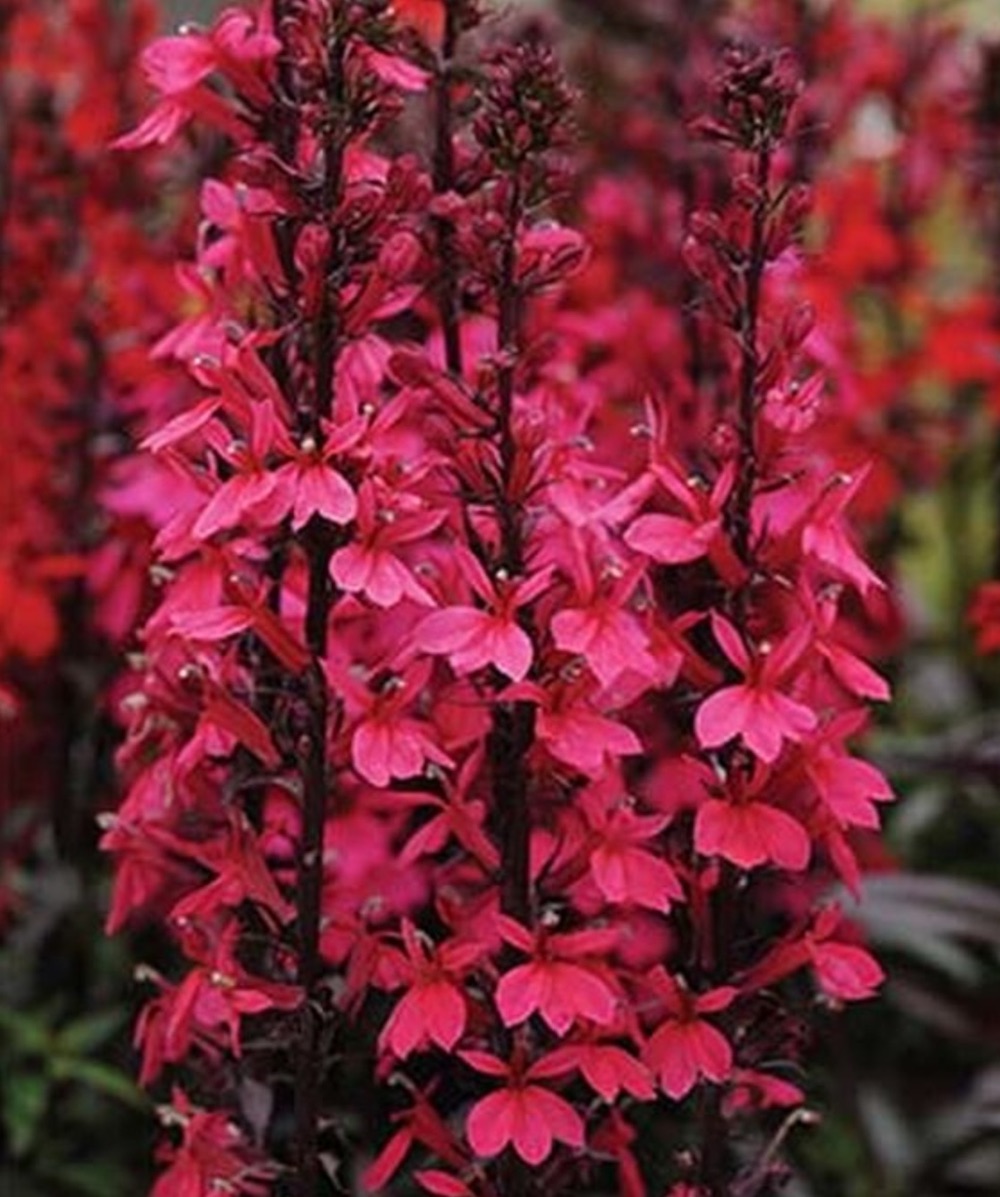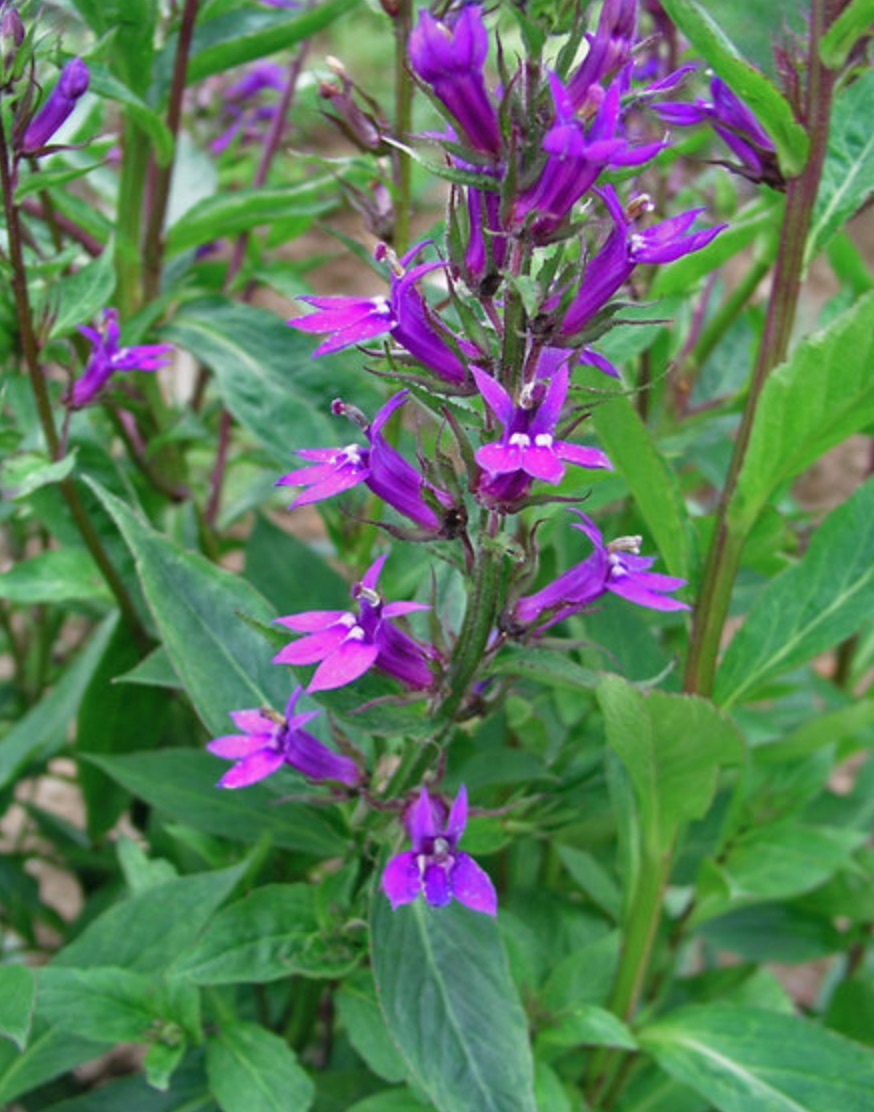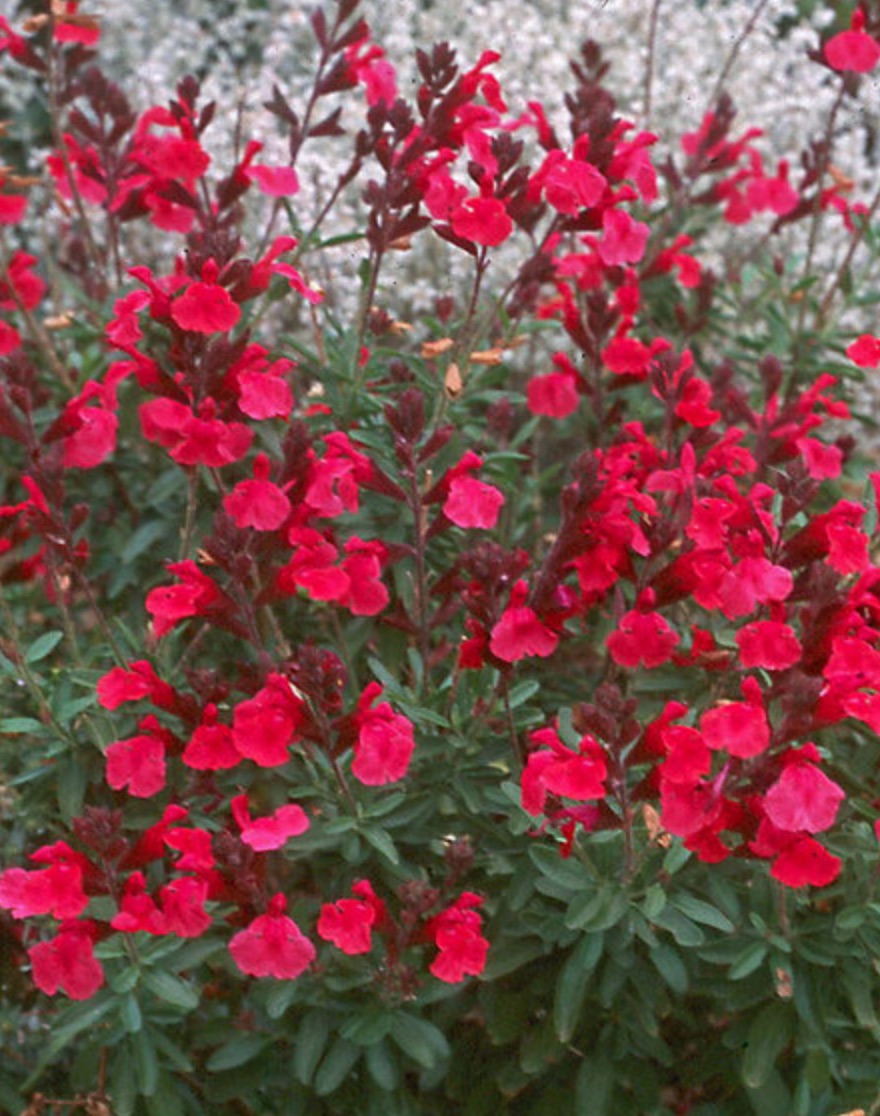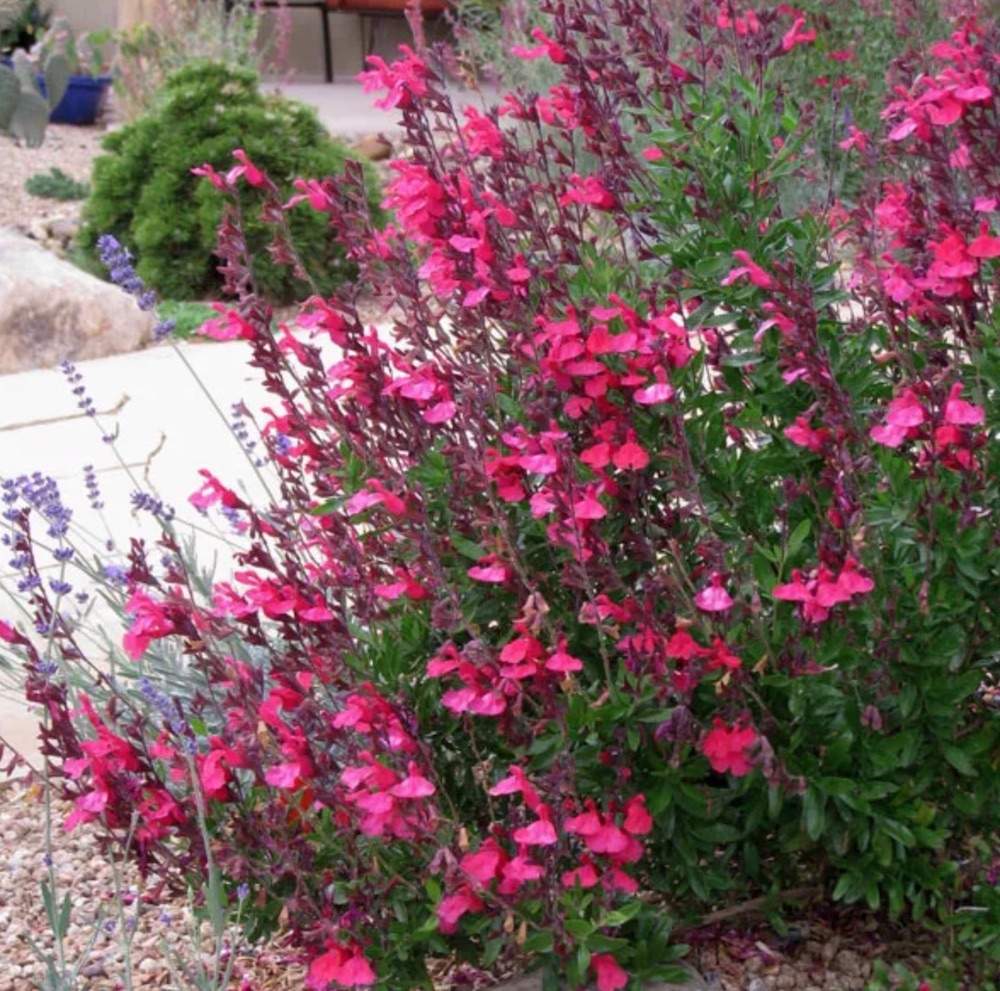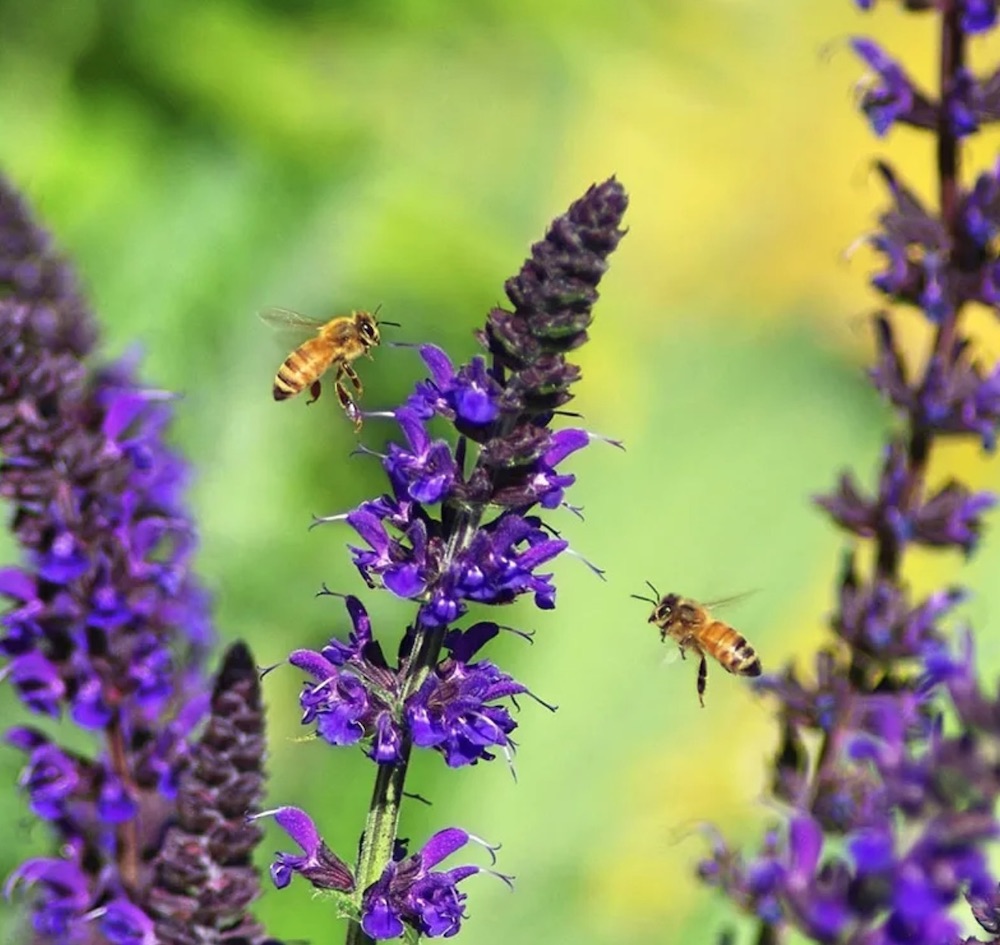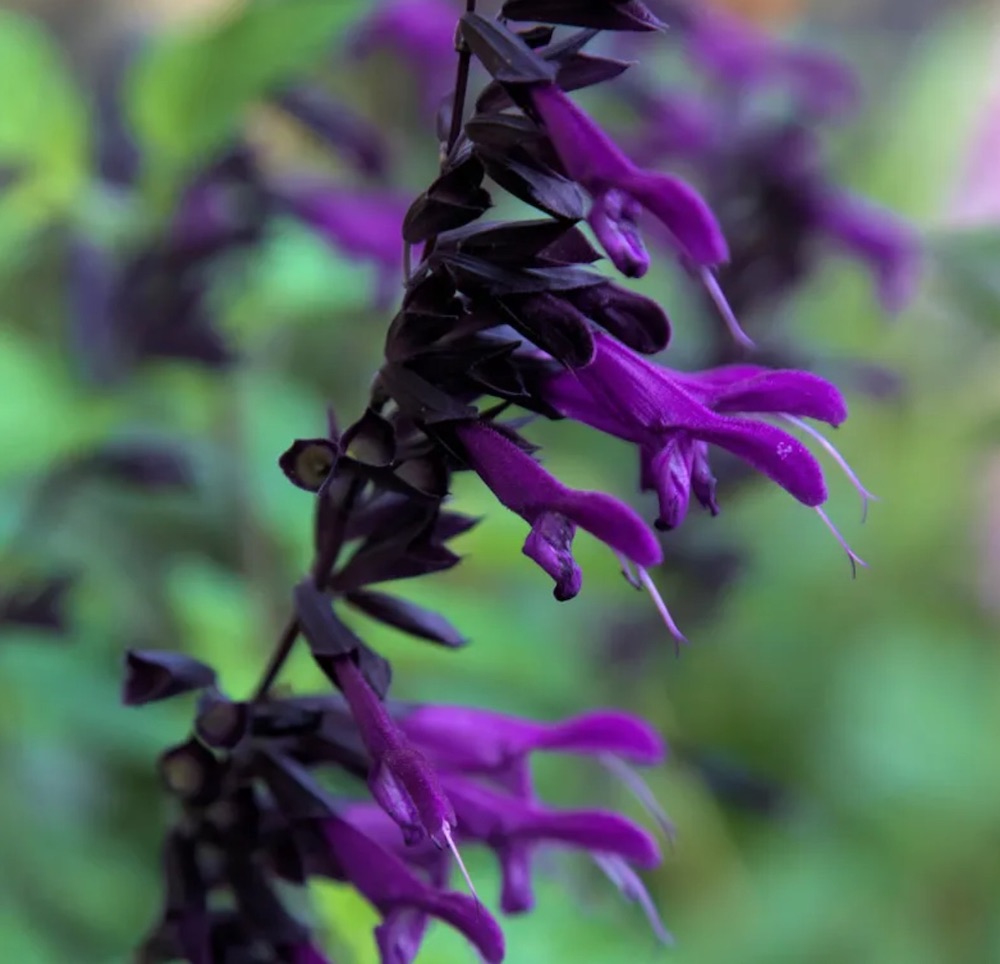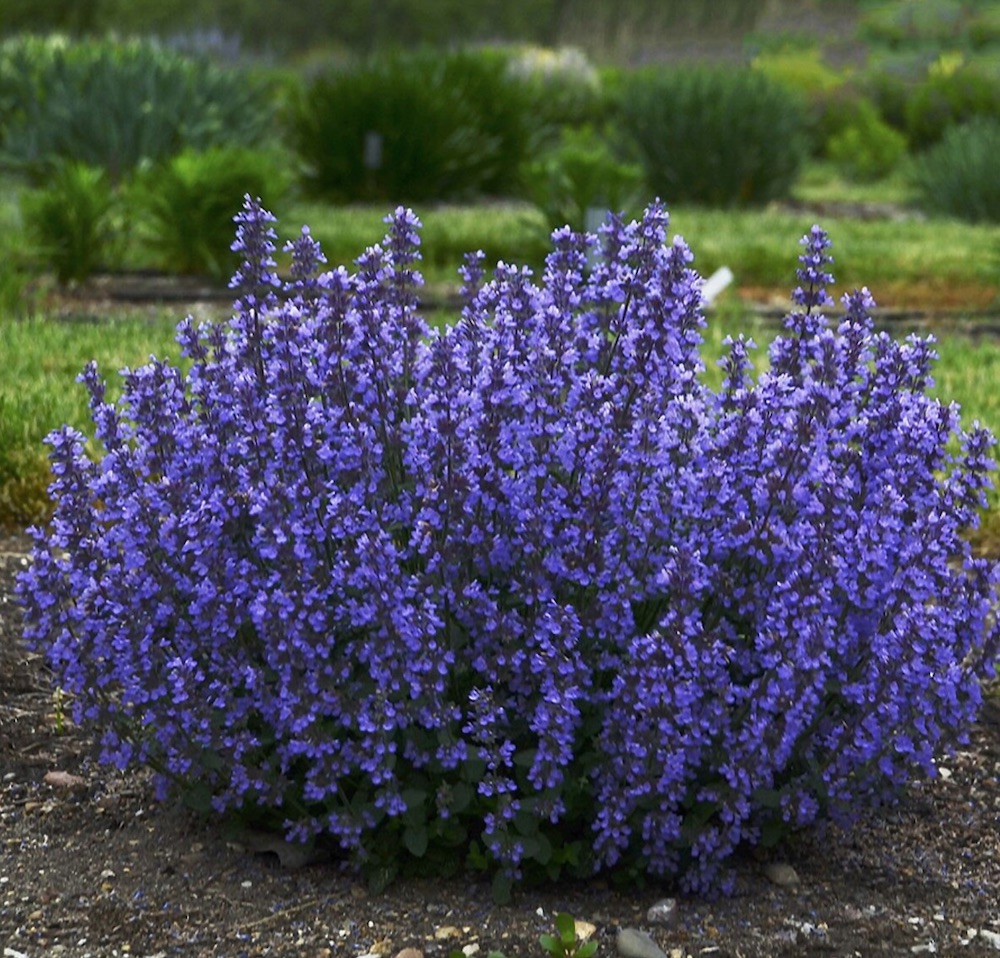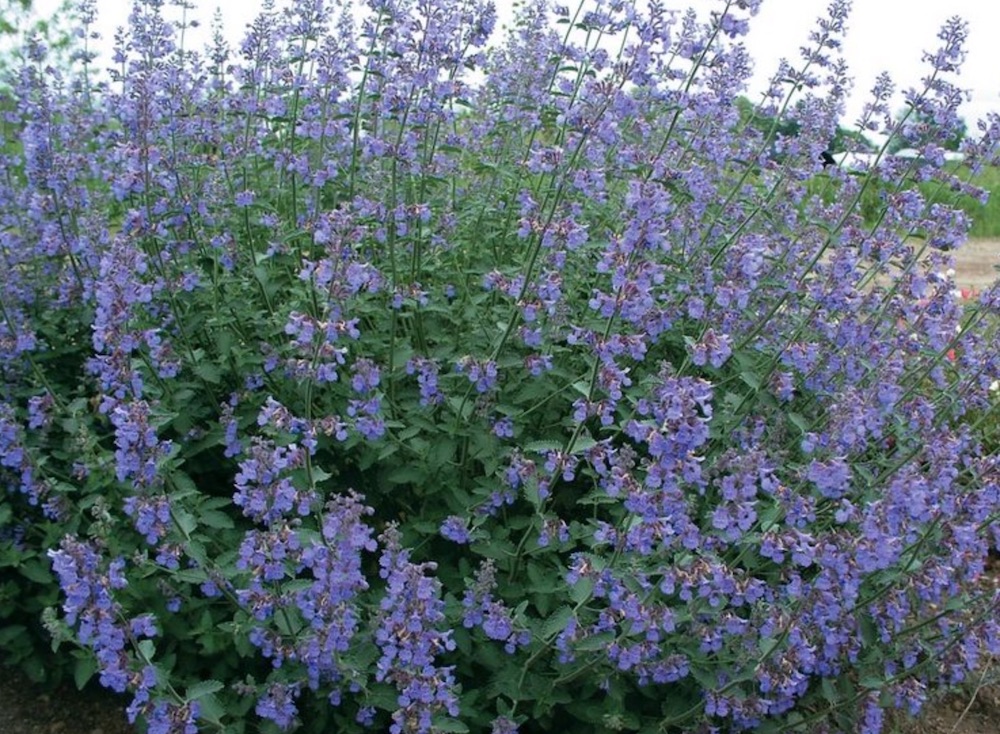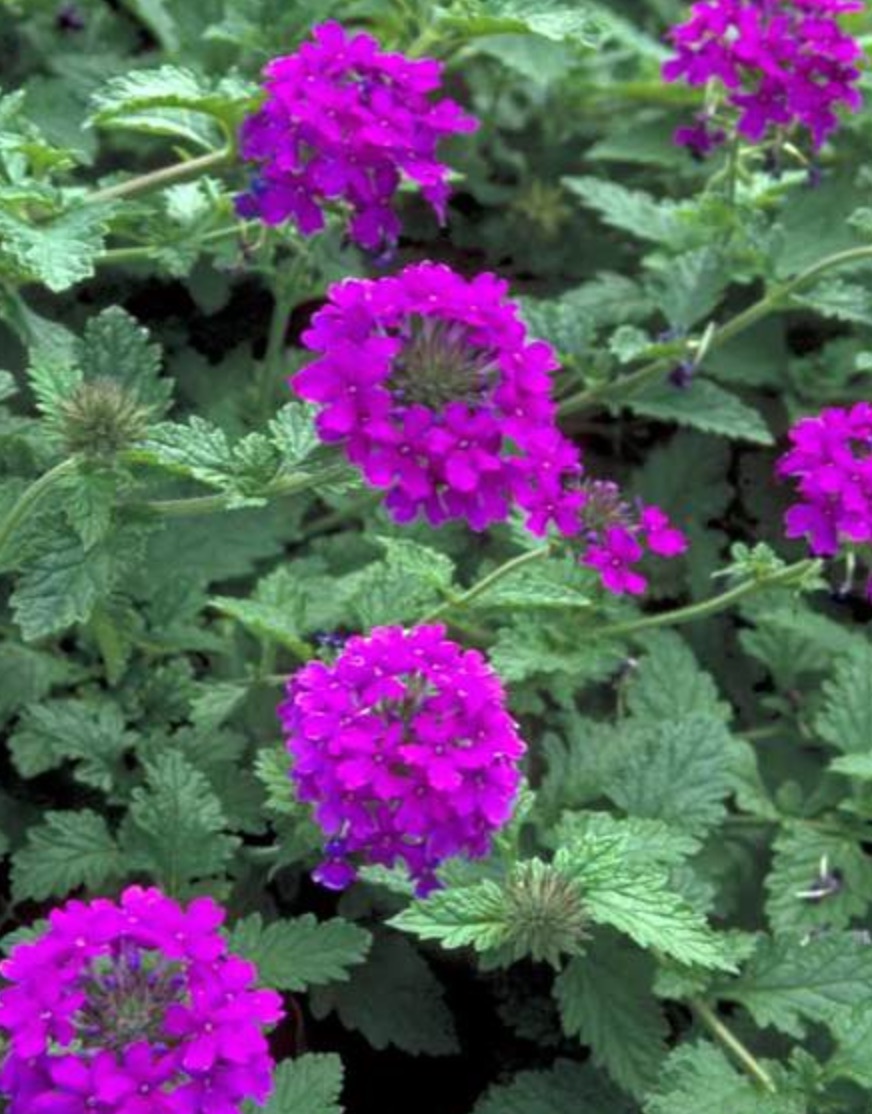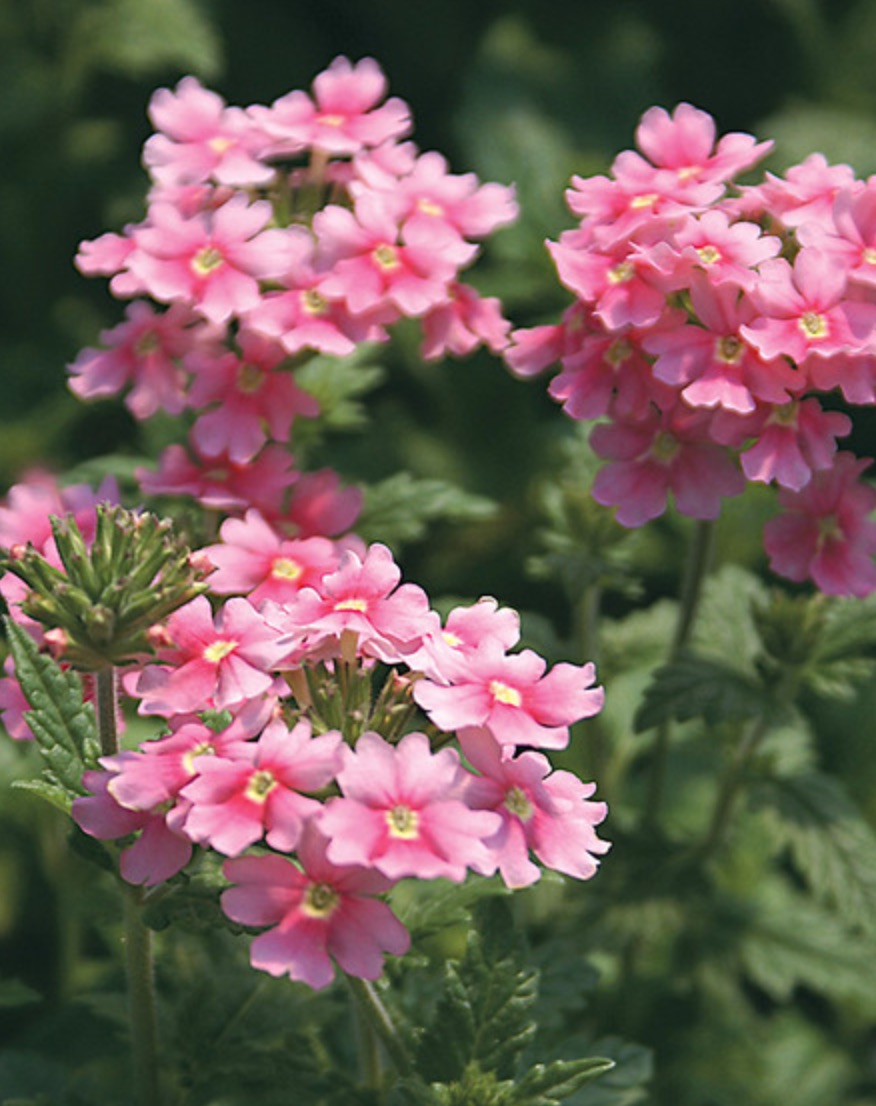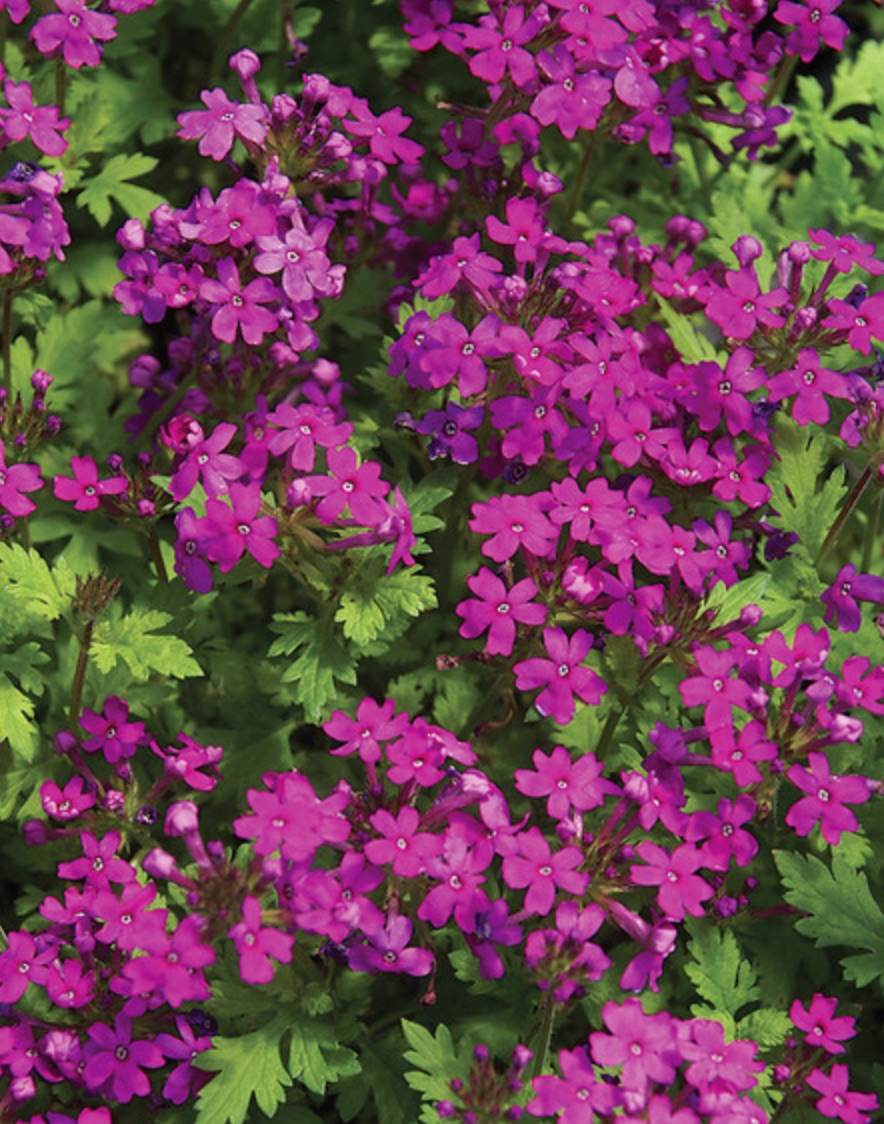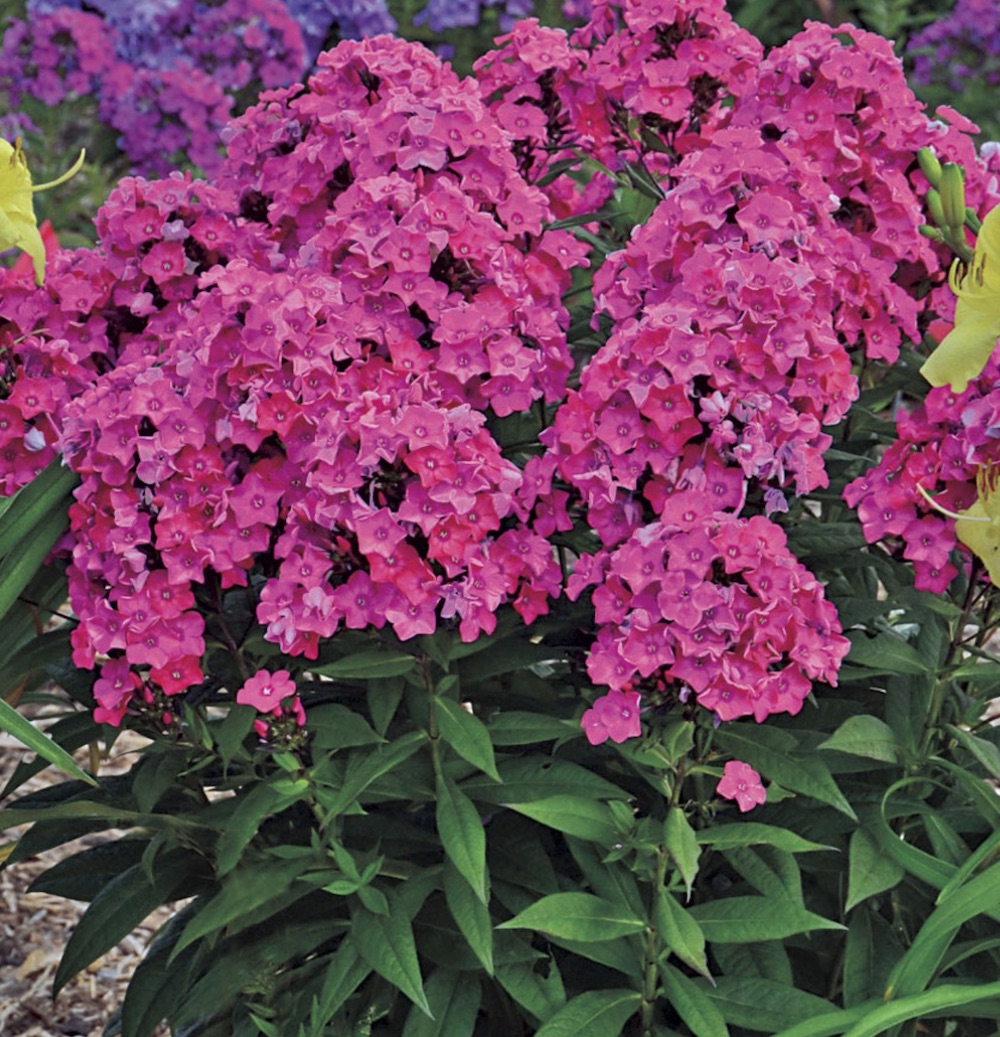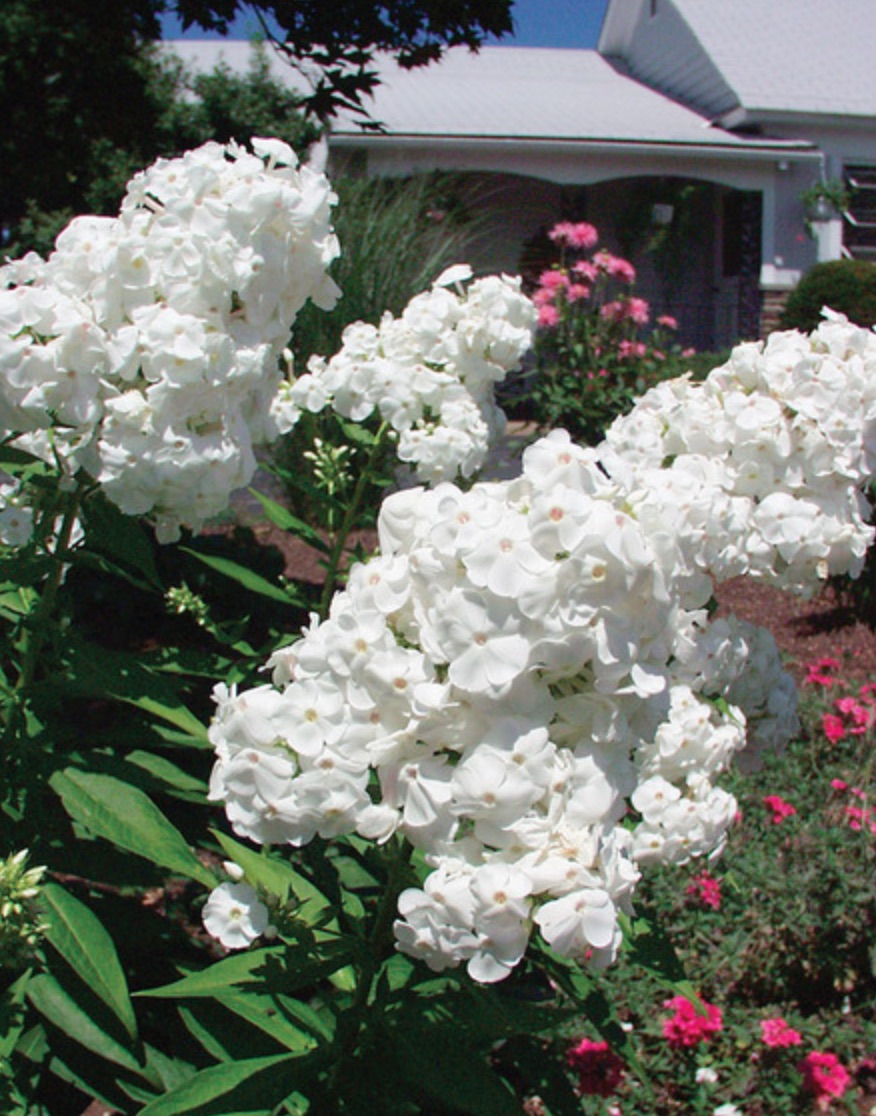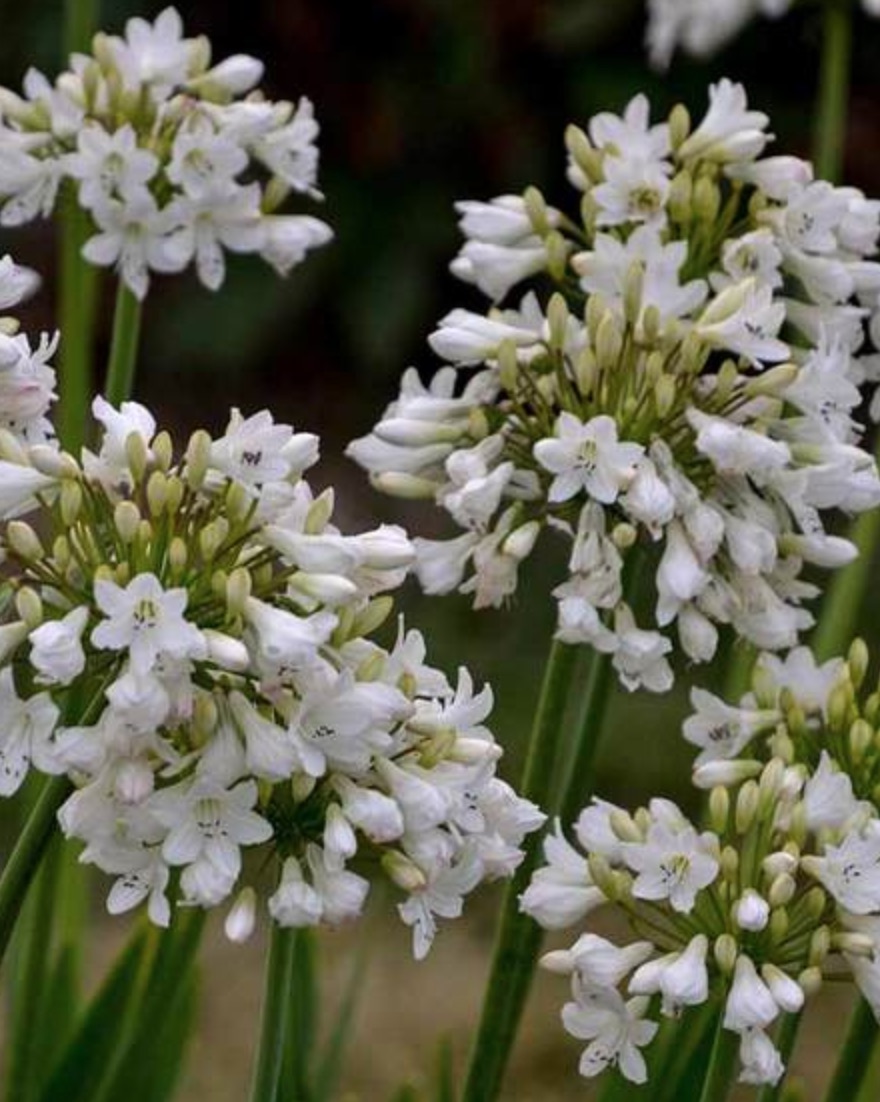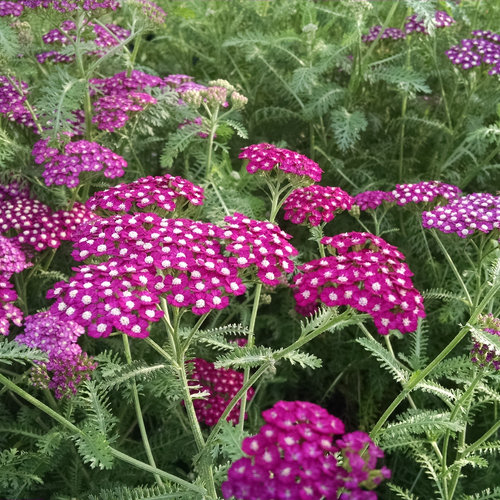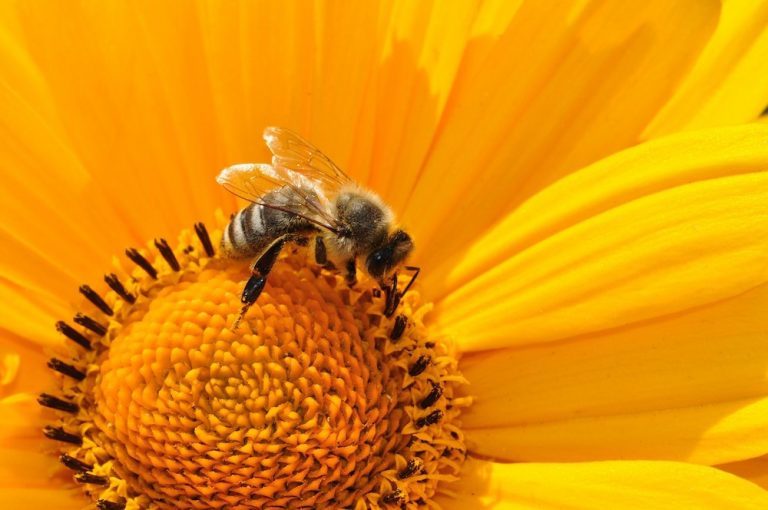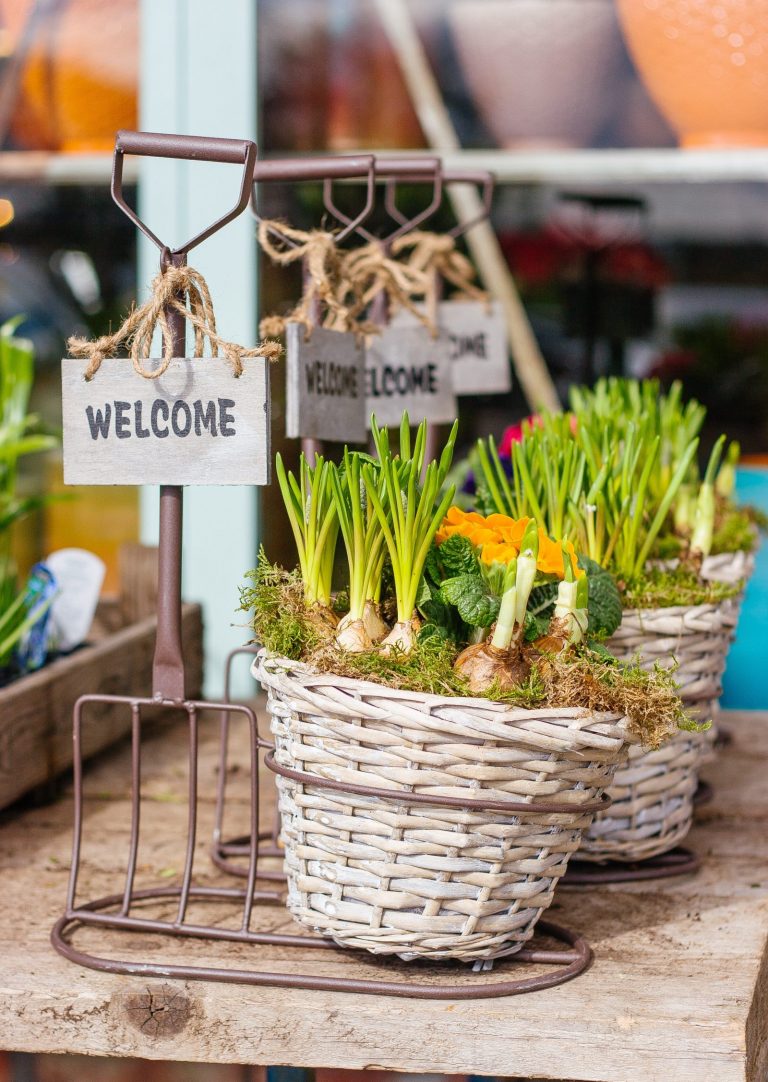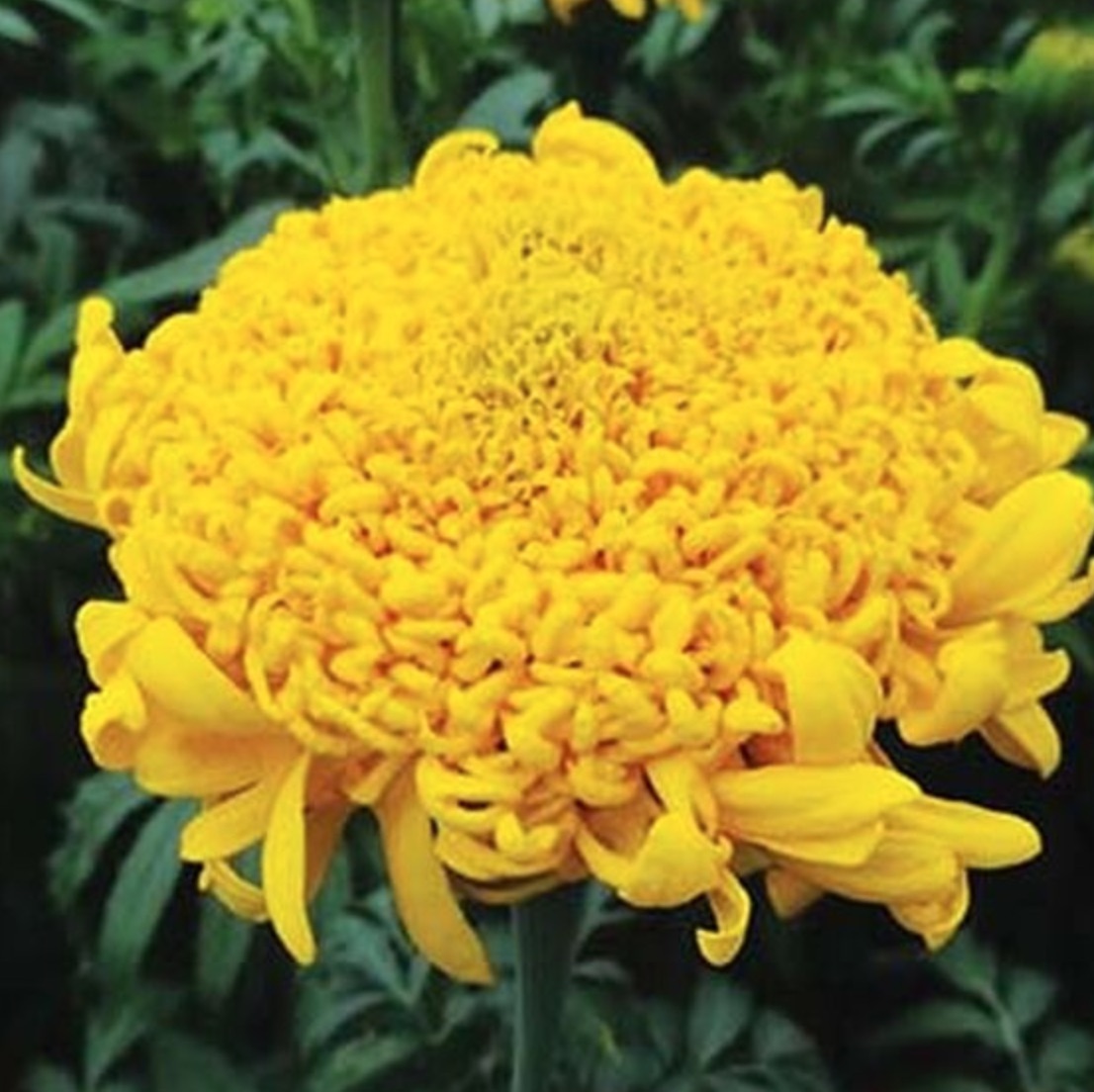Plants that Attract Hummingbirds
Plants that attract hummingbirds. With warmer weather approaching, you might be thinking about your garden. Consider garden plants rich in nectar that pollinators such as hummingbirds can feast on. Whether you’re creating a new garden or expanding the existing garden, there are many plants that hummingbirds and other pollinators are drawn to.
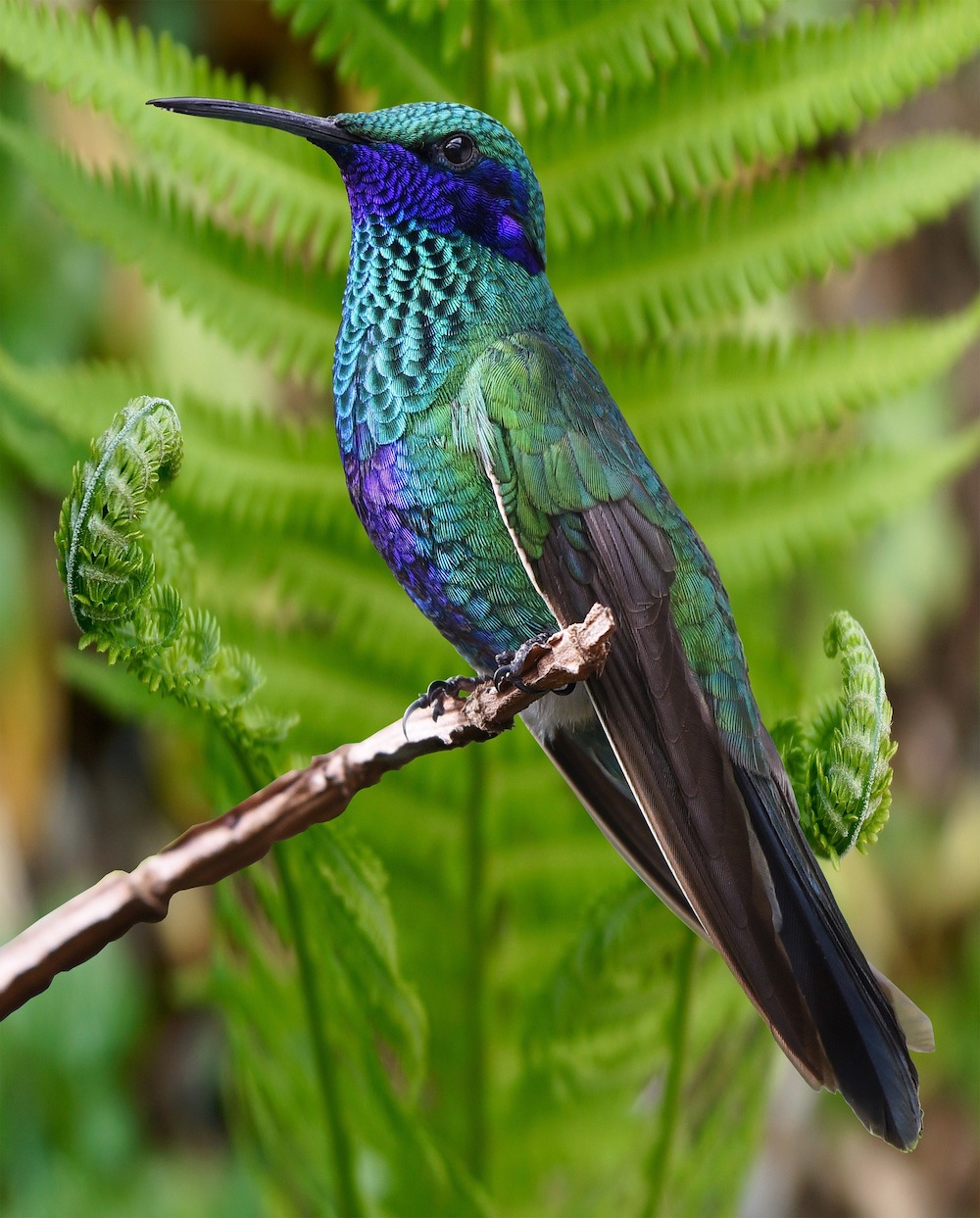
Take a look at our list of plants that hummingbirds love. And consider any of these plants for creating a pollinator garden at your home. Be sure to let us know which are your favorites.
SPRING BLOOMING
-
Aquilegia
Sometimes known as Columbine, the Aquilegia plants are Spring blooming perennials. Some varieties have spurs that project behind the blossoms. And others are spurless double blossoms.
Aquilegia Clementine Red
A spurless large fuchsia red Columbine with double blooms. The Aquilegia Clementine Red blooms can be used as fresh-cut flowers. Foliage is lacy green with large leaves. Grows in zones 3 to 9 in mostly shady to full Sun. Reaches 18 inches tall. Fuchsia red blooms appear in mid-Spring to early Summer. Beneficial for pollinators and attracts both butterflies and hummingbirds. Resistant to deer and rabbits. Tolerant of shade conditions. Grow with Hosta plants as a companion.
Blue Star Columbine
White petals with an outer layer of blue sepals create a star effect. Blue Star Columbine has dusky blue-green leaves. Grows in zones 4 to 8 in part shade and part Sun to Full Sun. Reaches 24 inches tall with a spread of 12 to 18 inches wide. White petals with blue sepals bloom from Spring to early Summer. Highly attractive to hummingbirds for its nectar. Resistant to deer and rabbits.
Rocky Mountain Columbine (Colorado State Flower)
A native of the intermountain West, it is ideal for mountain gardens with cool evenings. Rocky Mountain Columbine has beautiful blue and white flowers. Grows in zones 3 to 8 in full shade to part shade and part Sun. Reaches 18 inches tall with a spread of 15 inches wide. White petals with blue sepals bloom from late Spring through early Summer. Attracts birds and hummingbirds. Resistant to deer and rabbits. Native fragrant perennial. Tolerates normal, sandy, acidic, and clay soil conditions. For best results, plant above an elevation of 7000 feet. Rocky Mountain is not recommended for hot, humid climates. Plant with Campanula rotundifolia as a companion plant.
-
Veronica Plants that Attract Hummingbirds
The Veronica perennial is also known as Creeping Speedwell and Speedwell.
Veronica Georgia Blue
Blooms are a rich blue color with white eyes. Foliage is a deep green glossy color with tinged burgundy and copper tones. Burgundy tones of Veronica Georgia Blue foliage intensifies in the Autumn as temperatures fall. An evergreen ground cover that grows in zones 5 to 8 in mostly Sunny to Full Sun. Reaches 6 to 8 inches tall. Blue flowers with white accent blooms appear from early to late Spring. Attracts butterflies, and hummingbirds. Resistant to deer and rabbits. Tolerates normal, sandy, and clay soil conditions. Tolerant of hot dry sites and seaside salt conditions. Plant on a slope or bank.
Veronica Waterperry Blue
A low-growing, flowering ground covered with deep green leaves tinged with burgundy and copper overtones. Veronica Waterperry Blue has dainty lavender-blue dark-veined flowers with white eyes. Grows in zones 4 to 8 in mostly Sunny to Full Sun. Reaches 5 inches tall. Blue blooms appear in mid to late Spring. Attracts butterflies, and hummingbirds. Resistant to deer and rabbits. Tolerates normal, sandy, and clay soil conditions. Tolerant of hot dry site, seaside salt, and foot traffic conditions.
SPRING TO SUMMER BLOOMING PLANTS THAT ATTRACT HUMMINGBIRDS
-
Dicentra
Sometimes known as Bleeding Heart, the Dicentra has fern-leaf foliage. The Bleeding Heart plants have a tidy compact growing habit. The Dicentra plant provides textural interest in the garden.
Dicentra Valentine
Blooms of red and white valentines dangle from dark red stems. Spring foliage has purple-streaked leaves in bright green. Dicentra Valentine grows in zones 3 to 9 in full shade to part shade and part Sun. Reaches 30 inches tall and wide. Red and white blooms appear in late Spring to late Summer. Attracts hummingbirds.
Dicentra Amore Rose
Rose pink heart cluster blooms hang from slender stems. Dicentra Amore Rose has lacy blue-green foliage. Grows in zones 5 to 9 in full shade to part shade and part Sun. Reaches 9 to 14 inches tall. Rose-pink blooms appear in late Spring through late Summer. Attracts hummingbirds and is resistant to deer. Tolerates normal, sandy, and acidic soil conditions. Tolerant of shade garden areas.
-
Astilbe
The Astilbe is also known as perennial Spirea. Foliage is lush with deeply cut leaves in green to bronze colors. Mainstays of both shade and Woodland gardens. Combine with other shade-loving plants. Astilbe grows nicely with Brunnera, Ligularia, Lobelia, Ferns, and Hosta plants.
Astilbe Red Sentinel
Plume blooms of scarlet red hover over lacy forest green foliage. Astilbe Red Sentinel has striking mahogany red stems. Grows in zones 4 to 8 in full shade to part shade and part Sun. Reaches 24 inches tall. Scarlet red plumes bloom from late Spring until early Summer. Attracts butterflies and hummingbirds. Resistant to deer and rabbits. Tolerates normal, acidic, and clay soil conditions. Tolerant of shade and wet site conditions.
Astilbe Ostrich Plume
Plumes of pink weeping panicles on arching stems. Foliage of the Astilbe Ostrich Plume is deeply cut dark green leaves. New foliage emerges with a tinge of bronze color. Grows in zones 4 to 8 in full shade to part shade and part Sun. Reaches 30 inches tall. Pink blooms appear in early Summer. Attracts butterflies, and hummingbirds. Resistant to deer and rabbits. Tolerates normal, acidic, and clay soil conditions. Tolerant of shade and wet site conditions.
-
Papaver
The Papaver is also known as a Poppy. Blooms are shades of bright reds, pinks, oranges and whites. Clumps of fern-like foliage support the blossoms. Deer resistant and considered by many the stars of the garden during the Spring.
Papaver Princess Victoria Louise
Blooms have large salmon pink petals that form a bowl around the dark ornamental centers. Princess Victoria Louise Papaver has translucent petals that glow in Sunlight. Grows in zones 3 to 8 in full Sun. Reaches 24 to 30 inches tall. Salmon pink blooms begin from mid to late Spring. Beneficial for pollinators and attracts butterflies and hummingbirds. Resistant to deer and rabbits. Tolerates normal and clay soil conditions. Seed pods form after blooming which can be used in dried floral arrangements.
Prince of Orange Oriental Poppy
Flowers are bright orange with crepe paper-like petals. Prince of Orange Oriental Poppy blooms light up the garden. Grows in zones 3 to 7 in full Sun. Reaches 24 to 36 inches tall with a spread of 12 to 18 inches wide. Orange blooms begin late Spring until early Summer. Attracts butterflies and hummingbirds. Resistant to deer and rabbits. Tolerates normal and clay soil conditions.
-
Siberian Iris
Siberian Iris is adaptable and easy to grow. Narrow stems with sword-like leaves. Strong upright habit with sturdy stalks that support richly colored blooms.
Concord Crush Iris
Blooms of violet-blue ruffled petals make this Iris look exotic. The Iris sibirica Concord Crush has glowing yellow signals nestled within the layers of petals. Grows in zones 3 to 9 in mostly shady to full Sun. Reaches 24 to 36 inches tall with a spread of 11 inches wide. Violet blue ruffled blooms appear in late Spring to early Summer. Attracts hummingbirds and is resistant to deer. Tolerates normal, acidic, and clay soil conditions. Tolerant of shade, humidity, and wet side conditions. Gorgeous garden color! We especially love this one!
Iris Snow Queen
Sparkling white blooms with a touch of yellow over blue-green foliage. Planted en mass, the Iris Snow Queen is impressive. Grows in zones 3 to 9 in mostly shady to full Sun. Reaches 36 to 48 inches tall. White with yellow blooms begins from mid through late Spring. Attracts hummingbirds and is resistant to deer. Tolerates normal and acidic soil conditions. Tolerant of shade, humidity, and wet side conditions.
-
Lupine
The Lupine plant is also known as Lupinus. Likes moisture, especially during the hottest days of Summer. Does well in slightly acidic garden soil. Lupines convert nitrogen from the air for use in the soil to help nearby plants. However, Lupine plants do not perform well in the humid Gulf states.
Lupine Westcountry Red Rum
Large bloom heads of crimson, cerise, and lilac colors with medium to dark green foliage. Fiery spires of Lupine Westcountry Red Rum make great cut flowers. Grows in zones 3 to 9 in part shade and part Sun to full Sun. Reaches 36 inches tall. Shades of dark pink, lavender, magenta, and red blooms appear in late Spring through mid Summer. Bee-friendly and attracts hummingbirds. Tolerates normal, sandy, and clay soil conditions. Tolerant of drought conditions once established. Sun-loving but will tolerate a little shade. A word of caution – Lupine is harmful if ingested so plant Lupine responsibly.
Lupine Mini Gallery Yellow
Sunshine yellow spikes make the Lupine Mini Gallery Yellow a cheerful welcome. Grows in zones 4 to 8 in mostly Sunny to Full Sun. Reaches 14 to 16 inches tall. Bright yellow spikes appear from late Spring to mid Summer. Beneficial for pollinators and attracts both butterflies and hummingbirds. Resistant to deer and rabbits. Tolerates normal, acidic, and sandy soil conditions. A compact plant with sweet pea-shaped and nectar-rich blooms.
-
Verbena
Verbena is also known as Vervain. Foliage is mat-like with dark green, dissected leaves. A prolific bloomer that sprawls and spreads. Blooms are bright floral clusters.
Red Devil Perennial Verbena
A ground cover with Summer long blooms. Red Devil Perennial Verbena has brilliant red clusters of blooms. Grows in zones 6 to 10 in full Sun. Reaches 3 to 4 inches tall and 12 to 15 inches wide. Brilliant red blooms appear from late Spring through late Summer. Attracts butterflies, and hummingbirds. Resistant to deer and rabbits. Tolerates normal, sandy, and clay soil conditions.
-
Monarda
Monarda is also known as Bee Balm, Bergamot, and Oswego Tea. All Monarda plants attract bees, butterflies, and hummingbirds. Both foliage and flowers are fragrant.
Monarda Balmy Lilac
Bold purple blooms on a compact upright plant. Balmy Lilac Monarda grows in zones 4 to 9 in part shade and part Sun to Full Sun. Reaches 10 to 12 inches tall with a spread of 8 to 10 inches wide. Purple lilac blooms appear in Summer. Attracts bees, butterflies, and hummingbirds. Resistant to deer and rabbits. Tolerant of drought conditions once established. A dwarf bee balm with mildew resistance. Prefers moist to wet soil in full sun or part Sunny garden areas.
SUMMER BLOOMING PLANTS THAT ATTRACT HUMMINGBIRDS
Monarda Purple Rooster
Royal purple blooms appear over the Summer months. The Monarda Purple Rooster has mildew-resistant foliage. Grows in zones 4 to 9 in part shade and part Sun to full Sun. Reaches 36 inches tall with a spread of 11 inches wide. Purple blooms appear from early through late Summer. Beneficial for pollinators and attracts butterflies, and hummingbirds. Resistant to deer and rabbits. Tolerates normal and clay soil conditions. Tolerates wet site and seaside salt conditions.
Monarda Sugar Buzz Cherry Pops
Cherry red flowers attract pollinators to the garden. The Monarda Sugar Buzz Cherry Pops blooms are fragrant and large. Each bloom is 2 to 2 ½ inches on a 20-inch stem. Grows in zones 4 to 8 in part shade and part Sun to Full Sun. Reaches 14 to 16 inches tall with a spread of 18 inches wide. Fragrant cherry red blooms appear from mid to late Summer. Attracts bees, butterflies, and hummingbirds. Resistant to deer.
-
Asclepias
The Asclepias perennial is commonly known as Butterfly Weed because butterflies are drawn to the plant. Asclepias tuberosa is a species of milkweed. Milkweed is a native of eastern North America. The importance of Butterfly Weed or Milkweed to the Monarch butterfly can not be understated. The Asclepias plant is a major source of nectar for the Monarch butterfly. It also serves as a host plant for laying their eggs. As well as an essential perennial for the Monarch caterpillars.
Prefers Sunny locations with sandy soil conditions. When possible, we recommend planting in groups to attract butterflies and other pollinators such as hummingbirds. Bloom time is from mid Summer into the early Fall season. The milky sap is resistant to both rabbits and deer. This ecosystem provides the Monarch butterfly with habitat and supports the butterfly’s critical food chain.
Asclepias Tuberosa Butterfly Weed
Intense tangerine orange cluster blooms lure pollinators such as butterflies and hummingbirds. Asclepias Tuberosa Butterfly Weed serves as a host plant for the Monarch butterfly to lay eggs. Green seed pods open to glistening silky parachutes that float. Grows in zones 3 to 9 in full Sun. Reaches 18 to 24 inches tall. Orange blooms with yellow accents appear in early to late Summer. Beneficial for pollinators and attracts butterflies, and hummingbirds. Resistant to deer. Tolerates normal, sandy, acidic, and clay soil conditions. Tolerant of hot dry sites and seaside salty conditions. A native perennial from eastern North America. Once established, Butterfly Weed is low maintenance. Butterfly weed is a must-have for pollinator gardens.
Asclepias incarnata Ice Ballet
Clusters of small fragrant tiny white ¼ inch flowers appear in early Summer. The Asclepias Ice Ballet has lance-shaped dark-green leaves. Flower heads become attractive seed pods that release silky-haired seeds in the wind. Grows in zones 3 to 9 in part shade to part Sun to Full Sun. Reaches 36 to 48 inches tall with a spread of 24 to 36 inches wide. Fragrant white blooms appear in early to mid Summer. Attracts butterflies and hummingbirds. Resistant to deer. Tolerant of drought conditions once established.
Hello Yellow Butterfly Weed
Butter yellow clusters of flowers are pollinator magnets. The native Hello Yellow Butterfly Weed is an Asclepias tuberosa variety. Grows in zones 3 to 9 in part shade and part Sun to Full Sun. Reaches 18 to 36 inches tall with a spread of 12 to 24 inches wide. Butter yellow blooms appear in mid to late Summer. Attracts bees, butterflies, and hummingbirds. Resistant to deer. Tolerates normal and sandy soil conditions. A low-maintenance perennial that is drought tolerant once established. Waterwise perennial for a garden border, meadow, or pollinator garden.
-
Delphinium
The Delphinium plant is known by two other different names. It is called the Perennial Larkspur and Larkspur.
Dark Blue Dark Bee Delphinium
Beautiful dark blue shades of petals with blue-black centers that are referred to as bees. The Delphinium Dark Blue Dark Bee is an intense blue delphinium. Grows in zones 3 to 8 in mostly Sunny to Full Sun. Reaches 36 inches tall. Blue blooms appear from early to late Summer. Beneficial for pollinators and attracts butterflies and hummingbirds. Resistant to rabbits.
Delphinium Blue Lace
A stand-out in the garden, the Delphinium Blue Lace has striking rich sky blue flowers with lavender-pink centers. Grows in zones 3 to 7 in part shade and part Sun to Full Sun. Reaches 5 to 6 feet tall and 12 to 14 inches wide. Intense shades of sky-blue blooms appear from early through late Summer. Attracts butterflies and hummingbirds. A cold-hardy perennial that is resistant to deer and rabbits. Mildew resistant in a full Sun garden area that isn’t overcrowded.
Blue Lace Delphiniums need alkaline soil to prosper. Provide a continual supply of rich organic compost soil throughout the season. And lastly, trim the first few blooms that emerge to stimulate re-blooming.
Delphinium Cobalt Dreams
Rich blue cobalt blooms with a pure white bee (center) thrive in Sunny garden areas. Delphinium Cobalt Dreams are mildew resistant when planted in a spacious garden area. Grows in zones 3 to 7 into full Sun. Reaches 5 to 6 feet tall and 18 to 24 inches wide. Blooms of dark blue and light purple appear from early through late Summer. Attracts butterflies and hummingbirds. Resistant to deer and rabbits. Bred in New Zealand by Terry Dowdeswell. Exhibits enhanced tolerance to cold, heat, and humidity conditions. Prefers alkaline soil with rich organic compost. Cut back the first blooms to stimulate repeat blooming.
SUMMER TO FALL BLOOMING PLANTS THAT ATTRACT HUMMINGBIRDS
-
Heuchera
Heuchera is also known as Coral Bells Plants and Alum Root. Available in an array of foliage colors, textures, and shapes. Excellent for shady and semi-shady garden areas. Bright foliage colors brighten the shade garden. Blooms are dainty flowers in aloft airy stems.
Northern Exposure Purple Heuchera
Gorgeous eggplant purple color with a light silver overlay and gray-green veining. The Northern Exposure Purple Heuchera combines color and texture for a dramatic garden look. Blooms are taller white flowers on slender dark stems. Grows in zones 3 to 9 in full shade to full Sun. Reaches 12 inches tall. White airy blooms appear from late Spring to early Fall. Attracts butterflies and hummingbirds. Resistant to deer. Tolerates normal and acidic soil conditions. An evergreen perennial for use as an edger or grow in a container.
Firefly Coral Bells
Bright red tiny flower spikes tower over scalloped green leaves. The Firefly Coral Bells is an early-season plant for hummingbirds and other pollinators. Grows in zones 3 to 8 in part shade and part Sun to Full Sun. Reaches 18 inches tall with a spread of 15 inches wide. Bright red blooms appear in late Spring to Summer. Native perennial that attracts butterflies and hummingbirds.
Heuchera Georgia Peach
Foliage is giant, rounded silvery peach with deep rose-tinted leaves. Heuchera Georgia Peach has pinkish-orange tones. Grows in zones 4 to 9 in part shade and part Sun to Full Sun. Reaches 12 to 30 inches tall and a width of 18 to 24 inches. The foliage has shades of orange, pink, purple, red, rose, silver-gray with variegated colors. Clusters of ivory white blooms on 30-inch stems appear in midSummer. A cold-hardy native evergreen perennial that attracts butterflies and hummingbirds. Resistant to deer. Tolerates normal, sandy, poor, and clay soil conditions. Tolerant of heat, humidity, and drought conditions once established. Another stunning creation from the folks at Terra Nova. Plant with Hosta and Ferns.
-
Agastache
The Agastache plant is also known as Hyssop Hummingbird Mint Plant. Blossoms are attractive to hummingbirds and butterflies. And Goldfinches love the seeds that form after the blooms. Plant in full Sun with slightly alkaline soil. Agastache does not tolerate wet soil conditions. Native of the Southwest US and Mexico. Tolerant of heat and drought conditions once established.
Blue Boa Agastache
Flowers are rich purple-blue floral clusters. The dark purple 5-inch cluster of Blue Boa Agastache flowers is fragrant. Grows in zones 5 to 10 in full Sun. Reaches 28 to 30 inches tall with a spread of 20 to 24 inches. Purple blue blooms appear in Summer. Attracts pollinators, bees, and hummingbirds. Resistant to deer. Tolerates heat and drought conditions once established.
Agastache Bolero
Vivid rose-purple flower spikes appear over bronzy green foliage. A compact perennial, the Agastache Bolero has aromatic foliage. Grows in zones 5 to 10 in full Sun. Reaches 16 inches tall and wide. Purple blooms appear over mid-Summer to early Fall. Bee-friendly attracts honeybees, butterflies, and hummingbirds. Resistant to deer. Adapts well to dry soils. Plant in rock gardens and xeric containers. A North American native with fragrant flowers and foliage.
Agastache Kudos Mandarin
Licorice scented with ruddy orange blossoms and highlights of pinkish-orange foliage. Agastache Kudos Mandarin is a compact plant that can be grown in a container. Grows in zones 6 to 10 in full Sun. Reaches 22 inches tall with a spread of 16 inches wide. Blooms are dark pink, light red, light rose, and orange shades. Foliage is bronze in color. Blooms appear from early Summer through late Fall. Attracts bumblebees, butterflies, and hummingbirds. Resistant to deer. Tolerates normal and sandy soil conditions. Tolerates heat, humidity, and drought tolerance once established.
Agastache Firebird
Fiery copper-orange coral flowers bloom until the first frost. The foliage of the Agastache Firebird is aromatic mint-scented gray-green leaves. Rich in nectar, the tubular flowers grow on salvia-like spikes that are enticing to pollinators. Grows in zones 6 to 10 in mostly Sunny to full Sun. Reaches 24 to 36 inches tall. Fragrant orange blooms with copper accents appear from early Summer to mid Fall. Beneficial to pollinators and attracts butterflies, and hummingbirds. Resistant to deer and rabbits. Tolerant of hot dry site conditions. To promote continuous blooming, cut back flower stems in the Summer.
-
Lobelia
Lobelia is also known as the Cardinal Flower. Blooms are spires of colorful hood-like flowers open from the bottom to the top. Naturalize along streams. Tolerant of wet site conditions.
Starship Deep Rose Lobelia
Towers of deep-rose spikes with bronze foliage draw pollinators. Starship Deep Rose Lobelia can be grown in containers. Grows in zones 6 to 10 in full Sun. Reaches 20 to 24 inches tall. Deep rose blooms appear from Summer into Fall. Attracts pollinators, butterflies, and hummingbirds. Resistant to deer and rabbits.
Lobelia gerardii Vedrariensis
Spires of bright purple with hood-like flowers on narrow spikes create a stunning garden view. Lobelia gerardii Vedrariensis has foliage of green leaves with a red tinge. Grows in zones 3 to 8 in full shade to mostly Sunny. Reaches 2 to 4 feet tall. Purple blooms appear from mid Summer to early Fall. Beneficial for pollinators and attracts butterflies and hummingbirds. Resistant to deer. Tolerates normal and clay soil conditions. Tolerant of shade and wet site conditions. Plant with Ferns and Heuchera as companion plants.
Lobelia cardinalis Black Truffle
Blooms are deep purple-black foliage with red flowers. Lobelia cardinalis Black Truffle can also be planted in a rain garden. Grows in zones 5 to 8 in part shade and part Sun to Full Sun. Reaches 3 to 4 feet tall. Red blooms appear from mid Summer through early Fall. Beneficial for pollinators and attracts butterflies and hummingbirds. Resistant to deer. Tolerates normal and clay soil conditions. Tolerant of wet site conditions.
-
Salvia
Salvia is also known as Meadow Sage. Prefers full Sun garden areas. Thrives in heat conditions. Long blooming with resistance to deer. Essential garden perennials for feeding honey bees and a favorite of hummingbirds.
Salvia Wild Thing
Blooms are cherry red with purple highlights calyces over green aromatic foliage. Salvia Wild Thing is a semi-evergreen long-blooming perennial. Grows in zones 6 to 10 in full Sun. Reaches 24 to 30 inches tall. Cherry red blooms appear in early Summer through mid Fall. Beneficial for pollinators and attracts butterflies and hummingbirds. Resistant to deer and rabbits. Tolerates normal and sandy soil conditions. Tolerant of hot dry site conditions. Plant on a slope or bank.
Cold Hardy Pink Texas Sage
A cold-hardy Texas Sage of deep pink flowers. The Cold Hardy Pink Texas Sage grows in zones 6 to 10 in full Sun. Reaches 18 to 20 inches tall and 18 to 24 inches wide. Deep pink blooms appear in late Spring to early Fall. Attracts hummingbirds. Resistant to deer, rabbits, and Javelina. Tolerates sandy soil conditions. Tolerant of drought (xeric) conditions once established. A Waterwise compact woody shrub highly attractive to bees and hummingbirds.
May Night Salvia
Blooms are deep purple-blue flowers on spikes. May Night Salvia grows in zones 4 to 9 in full Sun. Reaches 15 to 18 inches tall and 18 inches wide. Fragrant deep purple-blue blooms appear from late Spring to late Summer. Bee-friendly perennial that attracts butterflies, birds, and hummingbirds. Resistant to deer and rabbits. Tolerates normal, clay, and sandy soil conditions. Thrives in hot, sunny garden areas. Plant with Lavender, Salvia, and Echinacea for a stunning garden display. Deadheading is recommended to encourage re-blooming.
Amistad Salvia
Also known as Friendship Sage, the Amistad Salvia has violet-purple flowers that attract hummingbirds. Grows in zones 8 to 10 in full Sun. Reaches 3 to 5 feet tall and 4 to 6 feet wide. Violet purple blooms appear in mid Summer to early Fall. Bee-friendly and attracts butterflies, birds, and hummingbirds. Resistant to deer. Tolerates normal, sandy, and clay soil conditions. In cooler climates, Amistad Salvia can be planted in the ground as an annual then overwinter in a basement or garage.
-
Nepeta
Sometimes known as catmint, the Nepeta plants are covered with blooms over the Summer. Prefers Sun and drier garden conditions.
Nepeta Cat’s Pajamas
Intense blue flowers cover this Nepeta. Nepeta Cat’s Pajamas are striking when planted in mass. Grows in zones 3 to 8 in full shade to part shade and part Sun. Mound growth habit perennial that reaches 30 inches tall and wide. Purple blooms from late Spring to late Summer. A native perennial that attracts bees, butterflies, and hummingbirds. Resistant to deer. Tolerant of heat and drought conditions once established.
Nepeta Six Hills Giant
Free flowering deep violet-blue blossoms cover Six Hills Giant. The Nepeta Six Hills Giant grows in zones 3 to 8 in mostly Sunny to Full Sun. Reaches 3 feet tall. Deep violet-blue blooms appear in early to late Summer. Beneficial for pollinators and attracts butterflies and hummingbirds. Resistant to deer and rabbits. Tolerates normal and sandy soil conditions. Plant on a slope or bank. Tolerant of hot dry site conditions.
-
Verbena
Verbena is also known as Vervain. Foliage is mat-like with dark green, dissected leaves. A prolific bloomer that sprawls and spreads. Blooms are bright floral clusters.
Verbena Homestead Purple
Large rich velvety purple flowers are low maintenance low growing perennials. Verbena Homestead Purple grows in zones 6 to 10 in mostly Sunny to Full Sun. Reaches 12 inches tall. Purple blooms from early Summer through late Fall. Beneficial for pollinators and attracts butterflies and hummingbirds. Resistant to deer. For a stunning garden display, plant among silver-leaved plants. Silver-leaf plants such as Artemisia, Lamb’s Ears, or a white blooming Echinacea.
Verbena Apple Blossom
A low-growing perennial with light pink blossoms with dark pink centers. Verbena Apple Blossom grows in zones 6 to 10 in mostly Sunny to Full Sun. Reaches 14 inches tall. Light pink blooms appear from late Summer to late Fall. Beneficial for pollinators and attracts butterflies and hummingbirds. Resistant to deer. For a stunning Sun-filled garden, plant Apple Blossom with silver-leaved plants. Silver-leaf plants such as Artemisia, Lamb’s Ears, or a white blooming Echinacea.
Verbena Canadensis
Rose-lilac flowers create a vibrant garden. The Verbena Canadensis needs plenty of room to spread. Grows in zones 5 to 9 in mostly Sunny to Full Sun. Reaches 12 inches tall. Rose lavender blooms appear in early Summer through late Fall. Beneficial for pollinators and attracts butterflies, and hummingbirds. Resistant to deer.
-
Phlox
Sometimes Phlox is known as garden phlox. Large clusters of blooms in a variation of colors. The Garden Phlox is known as the backbone of the perennial border.
Phlox Glamour Girl
Large clusters of hot coral pink blooms on purple stems give this Phlox its name. Phlox Glamour Girl grows in zones 4 to 8 in part shade and part Sun to Full Sun. Reaches 32 inches tall and 18 to 24 inches wide. Coral to Light Pink blooms appears in mid Summer to early Fall. Attracts butterflies, and hummingbirds. Tolerant of heat and humidity conditions. Tolerates normal and clay soil conditions.
David Phlox
Fragrant white clusters of flowers are very attractive to pollinators. Foliage is light green and mildew resistant. Phlox David provides color to the garden in Summer. Grows in zones 4 to 8 in full Sun. Reaches 2 to 4 feet tall. Fragrant white blooms appear from late Summer to early Fall. Attracts butterflies and hummingbirds. Tolerates normal, sandy, and clay soil conditions.
Laura Phlox
Deep lavender-purple flowers with white eyes make Laura Phlox a standout in the garden. Grows in zones 4 to 8 in full Sun. Reaches 3 feet tall. Purple with white accent blooms appears from late Summer to early Fall. Attracts pollinators, butterflies, and hummingbirds. Tolerates normal, sandy, and clay soil conditions. These fragrant blossoms are a favorite among gardeners.
-
Agastache
Agapanthus is also known as Lily of the Nile and African Lily. An upright perennial with arching strap-like foliage. Agapanthus is a favorite of pollinators, butterflies, and hummingbirds.
Agapanthus Galaxy White
White flower clusters on tall stems with arching foliage. The Agapanthus Galaxy White grows in zones 6 to 9 in full Sun. Reaches 38 to 44 inches tall. White flower clusters appear from mid Summer to early Fall. Beneficial for pollinators and attracts butterflies and hummingbirds. Resistant to deer.
Tolerates normal and acidic soil conditions. Tolerant of humidity conditions. Grow in containers as well. Introduced by the talented Walters Gardens team.
This completes the list of our favorite Plants that Attract Hummingbirds. And by no means is this a complete list of plants that hummingbirds are attracted to. In fact, there are quite a few plants that attract hummingbirds. So we recommend visiting your local garden center for additional selections of plants that suit your planting zone and that hummingbirds love.
Interested in pollinator gardening? If you found this helpful . . .
You May Also Enjoy some of our other pollinator gardening related posts.
Pollinator Plants that are Rabbit Resistant
15 Bee Friendly Perennials
How to Create a Wildlife Sanctuary With Native Plants
And if you have any questions, feel free to reach out to us. We are always ready to help you out. Thank you so much for dropping by.
Mary
Pin this for Later:
